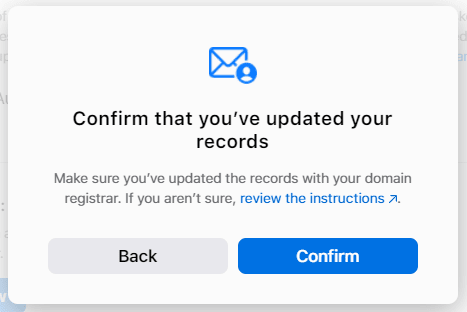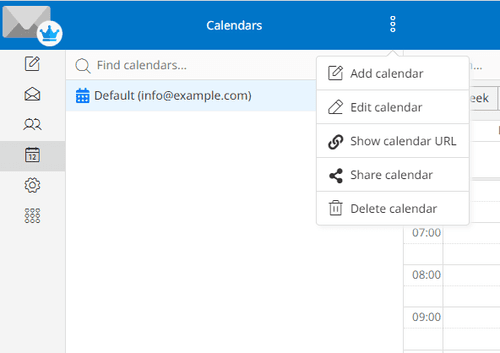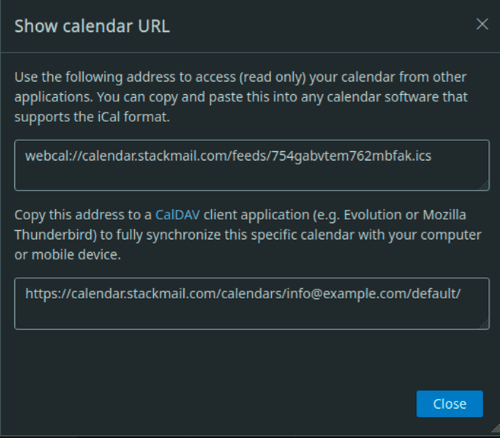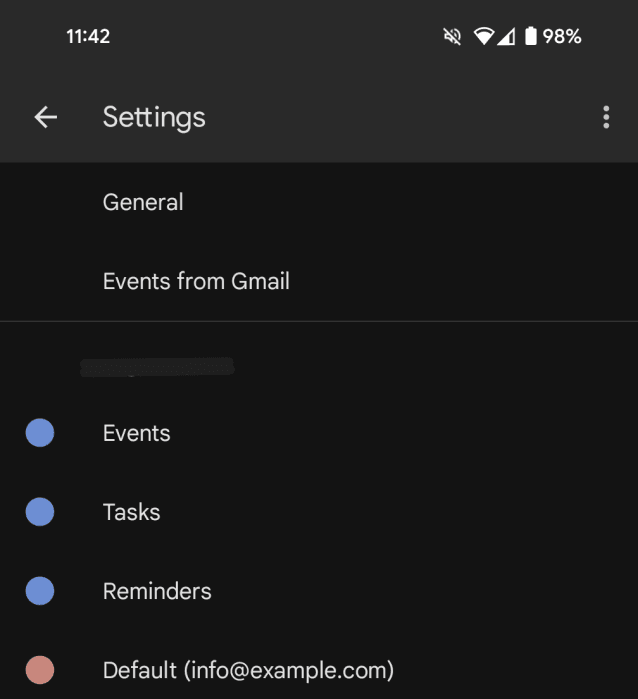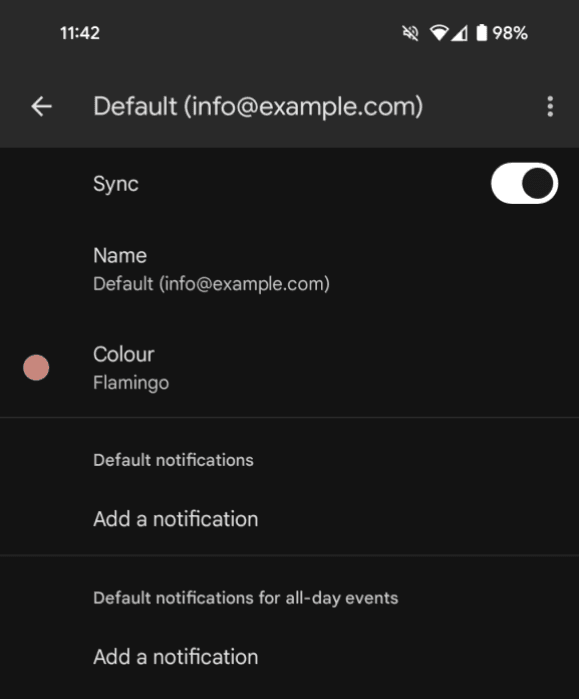Email Hosting Questions
Email hosting support articles: everything you need to know about setting-up and managing 20i's secure email services.
What are the recommended Thunderbird Mail client settings?
There are various methods of connecting to mailboxes on our platform. We always recommend IMAP as that helps keep messages in sync between various devices and our webmail system. This is our recommended configuration for Thunderbird mail clients for your email.
Incoming Server ("Account Settings" > "Server Settings")
Server Name: imap.stackmail.com
Username: Your e-mail address
Port: 993
Connection security: SSL/TLS
Authentication method: 'Normal password'
Outgoing Server (SMTP)
Server Name: smtp.stackmail.com
Port: 587
Connection Security: STARTTLS
Authentication method: 'Normal password'
Username: Your e-mail address
If you choose to use domain-branded server names, such as mail.your-domain or imap.your-domain, the secure connection may throw a certificate warning due to a common name mismatch. This can be safely trusted and your connection will remain secure.
We have a video showing the setup process:
 Lloyd Cobb
Lloyd CobbWhy are the IMAP folders missing from my iPhone or iPad?
If you can successfully send email and view any new messages in your Inbox, but aren't able to view additional subfolders, then it's likely that you have an incorrect IMAP Path Prefix setting on the device.
To correct this, take the following steps:
- Go to Settings > Mail > Accounts > Select your e-mail address > Account > Advanced
- At the bottom of this screen, you should see 'IMAP Path Prefix'. Leave this blank or, try entering 'INBOX'
- Save the changes, and then navigate back through the Email Account settings pages saving as required
You'll now be able to view all folders in the account. If that doesn't help, or it's already set up like that, you may need to remove and re-add the e-mail account on your device.
Get your own free personalised email address today
Register your domain name with us and get 100 free 10GB email accounts. Easy set up with Apple Mail or manage with our user-friendly webmail. Our email hosting is perfect for business and personal projects.
 Lloyd Cobb
Lloyd CobbHow do I add Office 365 DNS records?
If you need email to route via Office 365 instead of 20i’s StackMail platform, you can use our one-click record addition tool from within Manage DNS.
To use this tool:
- Head to Manage Hosting and select Manage on the hosting package
- Select Manage DNS within the package

- Select Office 365 Mail from the dropdown box under Preconfigured Settings. This will add the correct records for Office 365 Mail automatically.
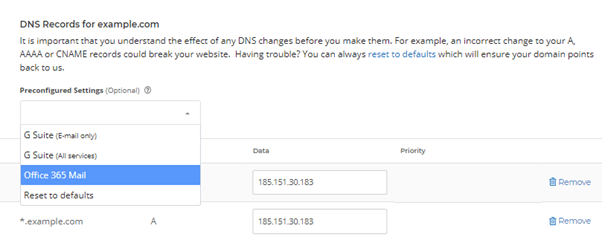
- Save by selecting Update DNS
Usually it can take about 30 minutes for DNS changes to propagate. However. it can take a little longer for changes to update across various DNS systems.
Here's a video covering the subject, demonstrated using an older user interface:
 Austin B.
Austin B.How do I restore mailbox backups with Timeline Backups Pro?
You can restore lost mailbox data using the Timeline Backups Pro tool – which can be ordered through your My20i account. With Timeline Backups Pro you will receive 30 days of snapshots of all the email accounts on your account.
- Firstly, you’ll need to head to the Timeline Backups tool. In My20i, if you're a Reseller, this can be found under Hosting Management. If you're not a Reseller, it willl be under Manage Hosting > Web Files
- Now find the hosting package that the email account is assigned-to from the list. Once you've found the relevant package, you will then need to select Manage.
- You'll see a list of different webspace, database and mailbox snapshots. From this list, find the name of the mailbox that you’d like to restore a snapshot for and select View Snapshots.

- Select the snapshot time/date that you'd like to restore to the mailbox.
Note: At this stage, you'll have the option to select Restore to temporary mailbox. This will create a new mailbox and restore the snapshot to the new mailbox instead of the original mailbox. This feature may be useful if you do not want to overwrite the contents of the original mailbox.
- Select Restore Snapshot
 Chris Wright
Chris WrightCan I add SPF records for my domain name?
Sender Policy Framework (SPF) records help reduce the chance of your domain being spoofed in spam messages. It can also increase the deliverability of e-mail to external providers such as Gmail and Outlook.
We maintain an SPF record that is kept up to date with all IP addresses used to transmit email from our network. This ensures that any email sent from our services passes an SPF check. To use this on your domain, you need to add a TXT record in DNS.
How to add SPF records automatically
By default, all newly provisioned hosting packages will have an SPF record for Stackmail added automatically. If you don't want this to happen, then you can opt-out by following the steps below:
- Go to Account Preferences in My20i.
- Select Do not automatically add Stackmail's SPF record to my DNS zones and click Save.

How to add SPF records manually
Firstly, access the DNS Management interface for your domain name. If the domain is registered with us, you can access this from the Manage Domains area of the control panel.
If the domain is not with us but is assigned to a hosting package, you can reach this interface via the Manage Hosting -> Select Package -> Manage DNS section.
Towards the bottom of the Manage DNS page, you will see 3 inputs to allow you to add new records. To add it:
- Leave the Name field blank
- Select TXT for Type
- Enter v=spf1 include:spf.stackmail.com a mx -all as data
Then save the changes. Your domain is now protected by an SPF record.
You can use the same record for all domains that use our mail services, however it should be noted that the above record will tell external providers all of your e-mail should originate from our network. If this isn't the case the record should be updated accordingly.
 Lloyd Cobb
Lloyd CobbHow to use the email migration tool
To migrate your emails and mailboxes to 20i, you can use our in-house Email Migrations tool. This will let you migrate your IMAP mailboxes, your Gmail mailboxes and your Outlook mailboxes in to 20i.
Note: You'll need to have set up the mailboxes within 20i first using the same password as currently used by the mailbox. Here's how to set up a mailbox.
- Head to My20i > Manage Hosting > Options / Manage > Email Migration
- Enter the relevant credentials and then select Sync.
- Hostname - This will be the hostname of the mailserver that you are syncing your emails from. If you're not sure what this is then it may be worth asking your previous hosting provider what this is.
- Username - This will be the mailbox that you are syncing.
- Password - This will be the password of the mailbox at your previous host and of the newly created mailbox at 20i. Please note: you'll need to have set up the mailboxes within 20i first using the same password as currently used by the mailbox.
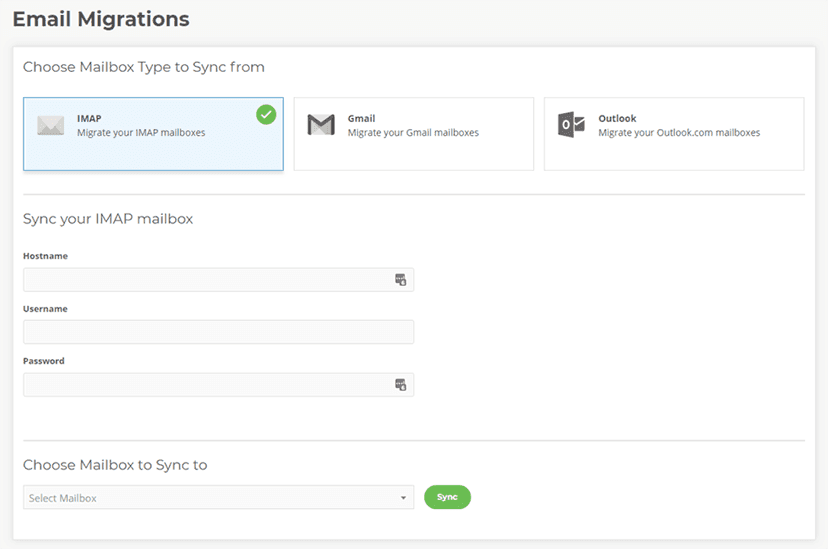
Once the sync has completed, your emails will have migrated over to 20i's email hosting.
My email migration has failed, what should I do?
If the sync fails to start, this is likely due to the credentials not being correct. You should confirm that the password you have used is correct and that the hostname is also correct - try logging into the previous hosts webmail to confirm the details are correct.
Can I use the email migration tool more than once for the same mailbox?
Yes, you can use it as many times as you want. You may want to do this if you've recently switched MX records so mail now routes to 20i, to get the latest copy of the mail from the preivous mail server you can simply redo a mailbox migration. This will then only migrate emails that are new, so you won't have any duplicate emails.
Does the email migration tool move or copy emails across?
The email migration tool copies the emails and folders across to 20i, so no emails are "removed" from your old mailserver/mailboxes.
Can I only perform one mailbox migration at a time?
Yes, you can only perform one mailbox migration at a time per package.
Where can I find my hostname?
Your previous host will be able to tell you your hostname. It is worth trying mail.yourDomain.com as that is a common hostname that is used.
Should I keep or change the DNS prior to an email migration?
It is strongly recommended that you change the DNS to 20i after the email migration has completed. This is to prevent any emails to get lost during the migration process.
 Austin B.
Austin B.Can 20i Support migrate my emails if I use WordPress FTP migration?
To migrate your emails and mailboxes to 20i email hosting, you can use our in-house Email Migrations tool. This will let you migrate your IMAP mailboxes, your Gmail mailboxes and your Outlook mailboxes into 20i.
To do this:
- Log in to My20i.
- Select which package you want to migrate emails into via Manage Hosting.
- Select the Email Migrations tool that is within the emails section.
- You can now simply enter the relevant credentials and select then select Sync.
If you the sync fails to start, this is likely due to the credentials not being correct. You should confirm that the password you have used is correct and that the hostname is also correct.
All 20i WordPress Hosting includes an unlimited number of 10 GB email mailboxes.
 Austin B.
Austin B.How do I add a DKIM record?
DKIM, like SPF, is a standard that enables a specific aspect of the email sending process to be authenticated.
The premise of DKIM is to check that an email is really from the domain or sender that it said it was sent from and if it has been altered in any way in transit.
As a hosting reseller your customers might ask you to add DKIM records for them, so it is import to understand them and know how to add them.
Specifically, DKIM (DomainKeys Identified Mail), provides a foundation for distinguishing legitimate mail. A DKIM signature is placed in the header of emails sent by 20i’s mail servers, so that the receiving mail server can then validate the signature using a public cryptographic key (2048 bit). It's added as a TXT record in the Manage DNS section for the domain name.
DKIM does not outright mean all emails will be delivered. However, it does provide the receiving mail server with further information so it can make a more informed decision on the best way to handle the email.
If you'd like to read more about DKIM, we'd recommend this blog post: DKIM Demystified.
How to add a DKIM record at 20i
- Head to Manage Hosting and 'Manage' the package you want to add a DKIM record.
- Select the DomainKeys icon.
Firstly, we'll explain how to add a simple DKIM record to your DNS.
- Ensure you’ve selected the domain you want to add the DKIM record-to.
- Add a Selector. This can be any value or name you like. It’s simply a field to identify the DKIM record. Then select Add Signature.

- If your nameservers are with 20i, we’ll automatically add the correct TXT record for you.

The signature will be added immediately to emails sent from the mailboxes under the domain selected. We will have automatically added a DNS record to Manage DNS. You may wish to wait for this to resolve for DKIM to be effective.
From here you’re all done: your emails will use DKIM as a method to authenticate email.
You can also use the Advanced Options section.
ℹ️ Note: This is only recommended if you’re familiar with customising DKIM signatures. Below is a description of each section and how it alters the DKIM signature that’s added to the header of emails sent.

Selector – This is a unique identifier for the DKIM record and can be set to any value you like. For example you could set it to indicate the name of an office location or the signing date (e.g. “october2019”).
Granularity/Identity – By default this is set to a wildcard value: '*'. You can use this field to set the DKIM record to be assigned to a specific mailbox, allowing you to constrain which mailbox can use this selector legitimately. For example, if you set the value of this field to be ‘sales’, only your sales@domain.com mailbox will use this DKIM signature. This field must match the local part of the signing address (mailbox).
Note – This field does not form part of the DKIM record or signature and is simply there so you can record any information about this record for your own information.
Service Type – Currently, DKIM only supports signatures added to messages sent via ‘Email’ (i.e. SMTP). However, in the future the DKIM standard may add more service types such as IM or VoIP, which we’ll then be able to support. This field can be left to either ‘*’ or ‘Email’ - changing this won’t influence behaviour at present.
Canonicalization – Some mail servers and relay systems may modify an email in transit, potentially invalidating a DKIM signature. There are two options you can set: 'Simple' and 'Relaxed'. If you expect your email to be modified in any way, you should select Relaxed which is more forgiving to changes made the header and body of the email.
Expiry Time – This is the time which, when elapsed, the DKIM signature will be invalidated in the mail header. By default it’s set to 86400 seconds (1 day). You may wish to extend this if you believe deliverability of the email will take longer than 1 day.
Flags - There are two flags available: 'Production' and 'Testing'. If you select Testing, you'll still receive a response to the email and the DKIM signature from the remote mail server, but the email won't be treated with different behaviour. Verifier systems may wish to track testing mode results to assist the signer. You'll mostly want to use Production.
 Austin B.
Austin B.I've reached my mailbox quota size. What can I do?
With 20i all mailboxes have 10 GB of data storage. It's unlikely that you should ever fill this unless you're receiving a large amount of mail or have a lot of emails with large attachments.
All the emails and attachments you have in your mailbox are stored on a server, and each mailbox is given a specified amount of space on the server, 10 GB in the case of 20i. Once that space has been filled by emails and their associated data, you will no longer be able to receive emails.
To check your mailbox usage:
- Log in to My20i and go to Reports > Mailbox Usage.
- Locate your mailbox and the usage will be displayed next to it.
Note: The storage shown on this page is only updated periodically. For the exact storage usage continue the following steps:
- Click on Manage.
- Locate the mailbox on the page you are redirected to.
- Select Options > Webmail.
- The current, up to date, usage will be displayed in the bottom left.
Steps to free up more space in your mailbox:
- Delete emails from your Trash folder. When emails are deleted from your inbox or other folders they will go to your trash. These emails are still accessible to you and are recoverable but are still taking up room on the server and so are using your mailboxes storage space. Once you delete emails from your trash they are gone completely. After this they’re no longer recoverable so only delete emails you’re sure you don’t need.
- Create a local backup of your emails. This will depend on the mail client you are using to view your emails, but most modern mail clients include an option to create a backup of your mailbox which you can then hold on to your computer. You can find a guide to doing this in Outlook here.
- You can also remove your sent emails if you no longer need a copy yourself. Deleting emails from your sent folder will not remove them from the recipient's inbox but will free up space on our server for your mailbox
To upgrade your mailbox to more than 10 GB:
- Head to Manage Hosting > Options > Manage > Email Accounts.
- Locate your mailbox with high usage.
- Next to the mailbox, you should see the option to upgrade. To get an extra 10 GB storage costs £9.99/$9.99 for the year - less than 3 pence/cents a day.
- Select this and check out to increase the mailbox by an additional 10 GB.
- You can purchase as many 10GB upgrades for your mailbox as you want. There is no limit to this.
 Austin B.
Austin B.How do I create an email signature in 20i webmail?
To create an HTML or plain text email signature that will be appended to all emails:
- Select Settings
- In the left column, select Identities
- In the next column along to the right, click on the email address for which you want you create or edit a signature
- Fill in signature details as necessary
How do I connect to my mailbox through Outlook for mobile?
Here's how to set up a 20i mailbox on a mobile device using Outlook. You can get Outlook for Android here, and Outlook for iOS here,
Firstly, you will need to open the Outlook app on your mobile device.
- Enter the email address of the mailbox that you would like to use on the device and select Add Account
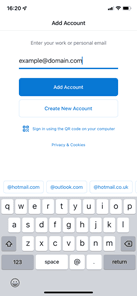
- Select the type of mailbox that you'd like to use – in this case, select IMAP, under Advanced.
- Enter the configurations as shown below:
Email Address: example@yourdomain.com
Display Name: Your name
Description: Enter any description that matches how you want to use the mailbox
Incoming mail server: imap.stackmail.com.
Outgoing mail server: smtp.stackmail.com.
Incoming server port (IMAP): 993
Use the following type of encrypted connection: SSL
Outgoing server port (SMTP): 465
Use the following type of encrypted connection: SSL/TLS
IMAP/SMTP Username: example@yourdomain.com
IMAP/SMTP Password: Mailbox Password

 Ruth Turner
Ruth TurnerWhat are your mail DNS records?
Any domain name using our nameservers will automatically have 'smtp', 'pop3' and 'imap'.your-domain.tld hostnames created, and MX records automatically pointed. If you're managing DNS externally, or wish to use the stack hostnames directly, the following can be used to access our mail services:
IMAP: imap.stackmail.com
POP: pop3.stackmail.com
SMTP: smtp.stackmail.com
MX: mx.stackmail.com
The above hostnames will work for all mailboxes on our platform.
If you wish to configure Outlook Autodiscover support, please create a CNAME for "autodiscover.yourdomain.com" to point to "autodiscover.stackmail.com".
 Lloyd Cobb
Lloyd CobbHow do I set up email on my iPhone?
There's a quick and easy way to set up email on your iPhone or iPad. On the device you wish to set up mail:
Auto-Configuration
- Head to Manage Hosting > Options > Manage.
- Select Email Accounts.
- Select Options > Account Setup.
- You'll then see the Download iOS Mobile Profile button, select this to download the correct information to your iPhone to set up your email account.
- Review and install the profile on your phone, you'll need to enter your mailbox password to complete the setup.
Manual Configuration
To set up your 20i mailbox on an Apple iPhone or iPad, you need to:
- Head to the Settings icon and locate the Mail option.
- Go to Accounts.
- Then select 'Add Account'.
- Select Other from this list.
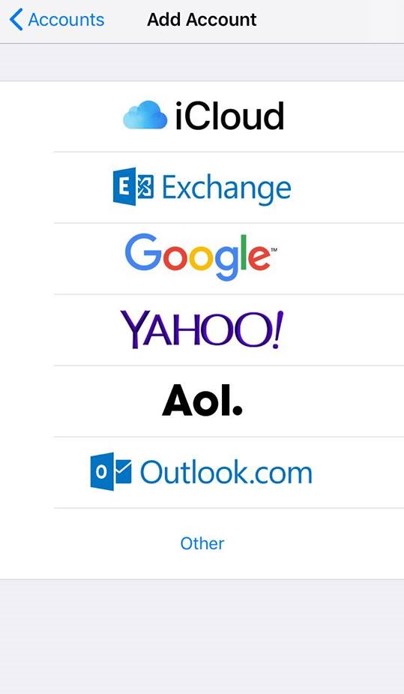
- Select Add Mail Account.

- Input the information requested:
Name: Anything
Email: example@yourdomain.com
Password: Mailbox Password
Description: Work, Business...etc

IMAP:
Incoming Mail Server
Host Name: imap.stackmail.com
Username: example@yourdomain.com
Password: Mailbox Password
Outgoing Mail Server
Host Name: smtp.stackmail.com
Username: example@yourdomain.com
Password: Mailbox Password
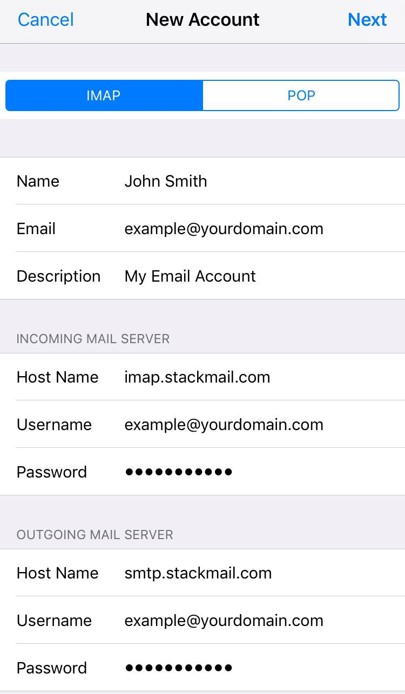
- Finally, select the mail account and go into the Outgoing Mail Server settings. Select Primary Server, make sure SSL is switched on and the port is set to 587.
Click here for our guide to set up email with Outlook.
 Austin B.
Austin B.Why is my domain blacklisted, and how do I get it removed?
What is a domain blacklist?
A Domain Name System Blacklist (DNSBL) is a list that allows internet service providers (ISP) and other website administrators to block emails or traffic from specific systems. It's usually those that are known for sending spam and other malicious content. Normally, a blacklist contains domains, email addresses or IP addresses.
Having a domain blacklisted can prevent emails being sent. Instead, 'bounce back' messages are received from the server that has rejected the email.
Why is my domain blacklisted?
Having a domain blacklisted usually results from the degradation in the reputation of the domain itself. Most often this is caused by sending emails that have been classified as "spam-like". If your IP is listed on a blacklist this may be due to the reputation of your ISP itself. There are various ways that you can improve the sender reputation of your domain name.
- Add an SPF Record: https://www.20i.com/support/email-hosting/spf-records
- Add a DKIM Record: https://www.20i.com/support/domain-names/add-dkim
- Test the emails that are being sent using online tools: https://www.mail-tester.com/
- Send emails using only authenticated SMTP over an SSL/TLS Connection.
How can I delist my domain?
You'll want to remove your domain from blacklists as soon as possible because they're often shared between providers. If you believe you've fixed the root cause of the listing, by ensuring spam isn't being sent, head to the blacklist providers site and follow their blacklist-removal process.
You may find two types of removal process:
Self-Service Removal – This means that you can remove the blacklist manually without much trouble or waiting. You must ensure you have fixed the issues before doing this. If the domain is listed again it may be more difficult to remove.
Time-Based Removal – Most blacklists have a time-based process whereby domains that have lower-level listings will be removed on a periodic basis, usually 1-2 weeks. Higher-level listings may take a longer period of time to be removed.
 Austin B.
Austin B.What are MX records?
An MX (Mail Exchange) record is a type of DNS record that specifies the mail server responsible for accepting email messages on behalf of a domain. It's used to route email messages to the correct server and ensure that they are delivered to the right recipient.
How do MX records work?
When an email message is sent to an email address at a specific domain, the recipient's mail server looks up the MX records for that domain to determine the mail server responsible for accepting email for that domain. The email is then sent to that mail server, which delivers it to the correct recipient.
MX records are used to ensure that email messages are delivered to the correct mail server and that they reach their intended recipients. They are important for the proper functioning of email services and are necessary for any domain that wants to receive email.
A domain can have multiple MX records, each with a different priority. The priority is specified in the MX record, with lower numbers indicating higher priority. If the highest-priority mail server is not available, the email is delivered to the next-highest-priority server, and so on. This allows for email delivery to be maintained even if one of the mail servers is down.
If you are using our email services, then the MX record that you would need to use is ‘mx.stackmail.com’. If your DNS is handled through 20i, this MX record will be added to your DNS zone by default.
MX records FAQs
Do you need an MX record to send email?
No, an MX record is not required to send email. It is only necessary for receiving emails. Some recipient email servers may reject emails from domain names with no MX record due to spam filter settings.
Where should my MX record point to?
Your MX record should point to the hostname of the mail server responsible for accepting email for your domain.
Can an MX record be an IP address?
No, an MX record must be a hostname and cannot be an IP address.
Is an MX record a DNS record?
Yes, an MX record is a type of DNS (Domain Name System) record. More information in our guide to DNS records.
What happens if there is no MX record?
If there is no MX record for a domain, email servers will not know where to deliver email for that domain, and email sent to that domain may be bounced or rejected.
How do I fix ‘no MX record found’ for domain?
To fix "no MX record found for domain" issue, you need to create an MX record for your domain pointing to the correct mail server hostname, and ensure it is properly configured to receive email.
What is the difference between MX and SPF records?
MX (Mail Exchange) records specify the mail server responsible for accepting email messages on behalf of a domain, while SPF (Sender Policy Framework) records are used to prevent email spoofing by specifying which mail servers are authorised to send email on behalf of a domain.
 Chris Wright
Chris WrightWhat is the Stackmail Customer Login URL?
If you need to log in to Stackmail - 20i's free webmail available with all hosting packages - the URL they need is www.Stackmail.com.
If you have a reseller hosting account, you can change this URL to your own preferred brand in Reseller Customisation in your 20i account.
Frequently Asked Questions
Can I have an SSL on my branded webmail URL?
Yes, you can now add an SSL to your branded webmail URL. To do this, head to Reseller Preferences >> My Brand and scroll down to the webmail section. You'll see below where you've added your subdomain and webmail domain the ability to select SSL. This will add an SSL to your branded webmail URL.
Note: You'll only be able to add an SSL if you've select your 'Brand Domain', selecting (All Domains) won't offer the SSL option due to Let's Encrypt rate limiting rules.
What CNAMEs can I use to point webmail to my own brand?
Using the tool within My Brand adds the relevant CNAMEs for you so there's no need to add these manually. A branded webmail URL will be given the CNAME:
webmail.example.com -> CNAME -> stackmail.com
A branded URL with an SSL applied to it will be given the CNAME:
webmail.example.com -> CNAME -> webmail.stackcp.com
 Austin B.
Austin B.WordPress knowledge: use SMTP with and without plugins
Sending emails directly from your WordPress site can be critical to your site’s success. It could be from a contact form to help your clients get in touch if they’re interested in your services, order emails to confirm details and provide receipts for purchases, or password reset emails to allow users access to their accounts.
WordPress itself comes with functionality out of the box that can allow for sending emails, but it’s not as secure as it could be, and can more often than not result in your business-critical emails resulting in the Spam folder.
Making use of SMTP with your WordPress site, however, can ensure that all of these important emails make it to their intended audience. Setting them up is much easier than you’d think. This guide will step you through what SMTP is, why it’s important to make use of it on your WordPress sites, and explain a couple of ways for you to get started using SMTP as soon as possible.
What is SMTP?
SMTP, also known as the Simple Mail Transfer Protocol, is the main protocol used to send and receive email. A majority of email systems make use of SMTP to send out emails between servers. These emails can then be retrieved using email client protocols such as IMAP or POP3.
Why should I use SMTP with WordPress?
By default, WordPress makes use of PHP Mail using the wp_mail function to send emails from contact forms, product orders and other functions that send out automated emails. However, PHP Mail lacks any form of authentication – it simply sends with the from address it’s provided directly from the server itself.
As a result, PHP Mail often gets used to spoof email addresses, commonly enough that some mail hosts simply mark emails from PHP Mail as spam or may even get blocked.
SMTP, on the other hand, connects to a mailbox directly and authenticates the connection using the mailbox password before it sends. This means that only setups with the correct mailbox details can actually send out emails. This is considered much more secure and can ensure that your site’s emails are less likely to be seen as spam and make their way to your intended recipients.
How can I connect using SMTP?
Connecting your WordPress site to your mailboxes using SMTP first requires you to understand where your emails are hosted – each mail host has a different hostname for their SMTP services. Knowing what this is can save you a headache in the long run. Some services have setups available to allow you to use smtp.yourdomain.com to connect, but this requires that subdomain on your domain to be pointed to their services.
If your emails are hosted here with us at 20i, our SMTP settings are as follows:
Hostname: smtp.stackmail.com
Port: 465 (SSL) or 587 (TLS)
Security: SSL/TLS
Username: Your email address you want to send with
Password: The password of the mailbox you want to send with
If you use Office365 to host your mailboxes instead, you’ll need to use their SMTP details:
Hostname: smtp.office365.com
Port: 587
Security: STARTTLS
Username: Your email address you want to send with
Password: The password of the mailbox you want to send with
Other mail hosts will provide guidelines or quick references online that will specify the SMTP connection details you need. If you’re unsure, check with them directly to confirm.
Once you have the details you need, it’s time to connect. Doing so can be done a couple of ways, depending on how confident you are with coding.
Connecting to SMTP using a Plugin
If you’re unsure and want an easy way to do it, there are a great number of WordPress plugins that handle the heavy workload of the connection for you, allowing you to simply pop in your SMTP details and begin sending straight away. We'll demonstrate the setup SMTP in WordPress with a plugin using two examples of popular ones. These are:
WP Mail SMTP
WP Mail SMTP is a free plugin that comes with a wizard that runs automatically upon installation and steps you through setting up your SMTP connection. When you first install it, you’ll be prevented with the following screen:
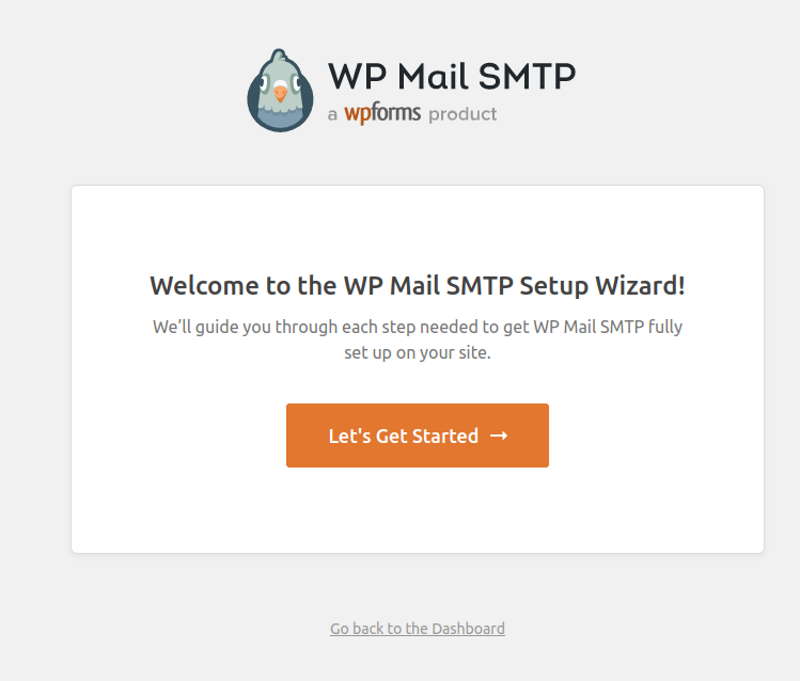
Select Let’s Get Started and you’ll be presented with some options for what type of SMTP service you use – there’s various auto configurations for different hosts, such as Google, Office365, Mailgun and SendGrid. If you use 20i’s mail services, you’ll want to select Other SMTP. If you’re unsure, check with your current mail host.
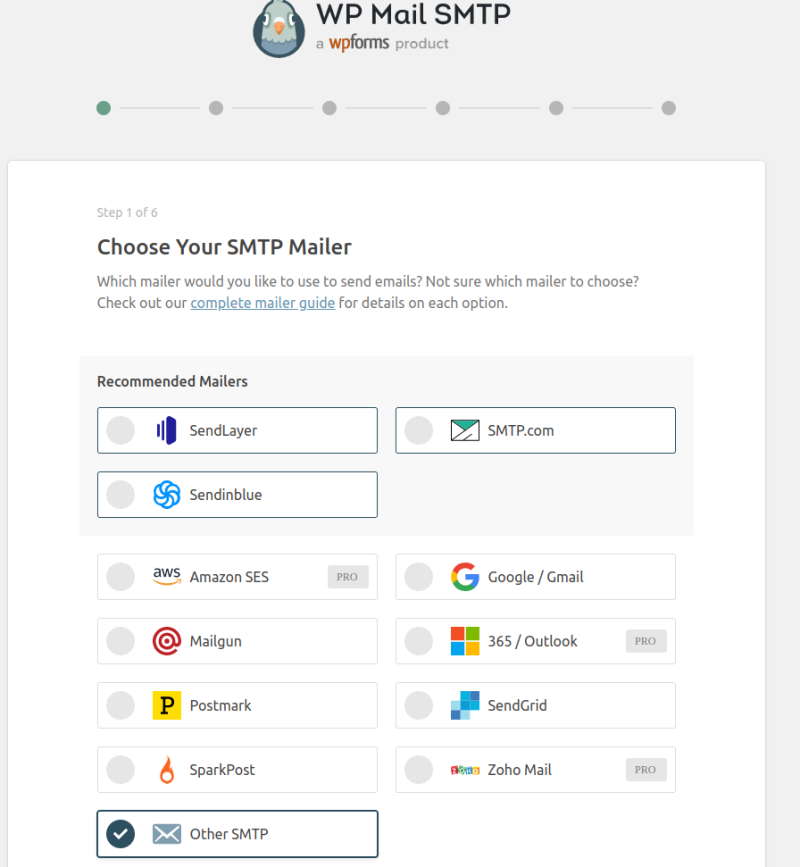
On the next page, you’ll be presented a form – follow the steps here to fill out your details. SMTP Host is where you’d input your hostname, and Encryption is your security – we recommend SSL or TLS, depending on what host you use.
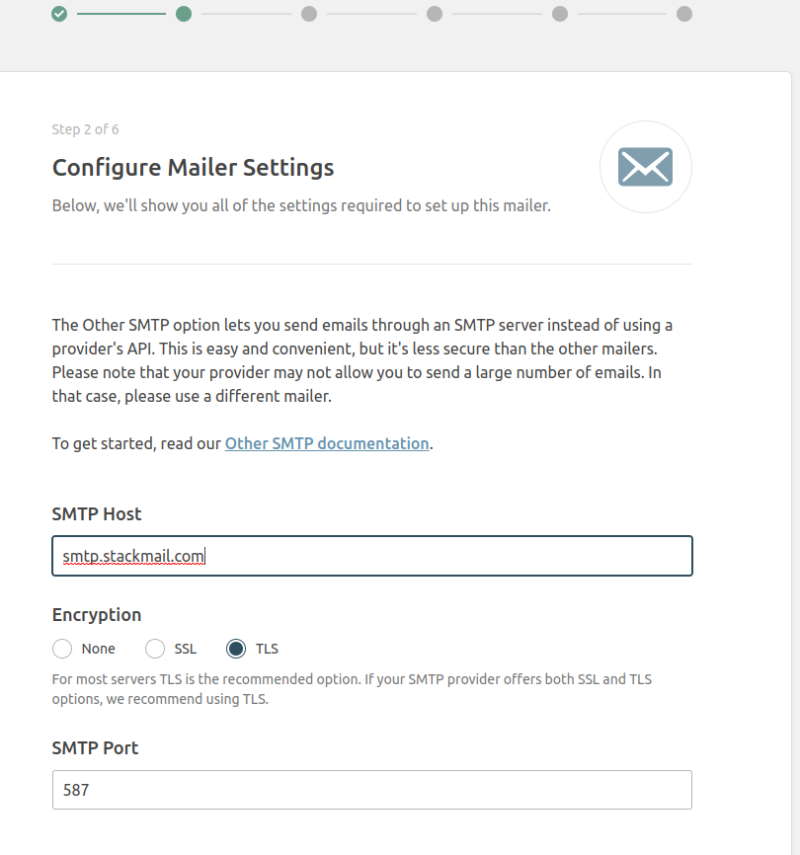
Make sure that Authentication is enabled, then input your SMTP Username and SMTP Password – these are the email and the mailbox password respectively. Lastly, set a From Name, which is the name that will appear as the sender of the email, and the From Email. You’ll want to make sure the From Email matches the SMTP username.
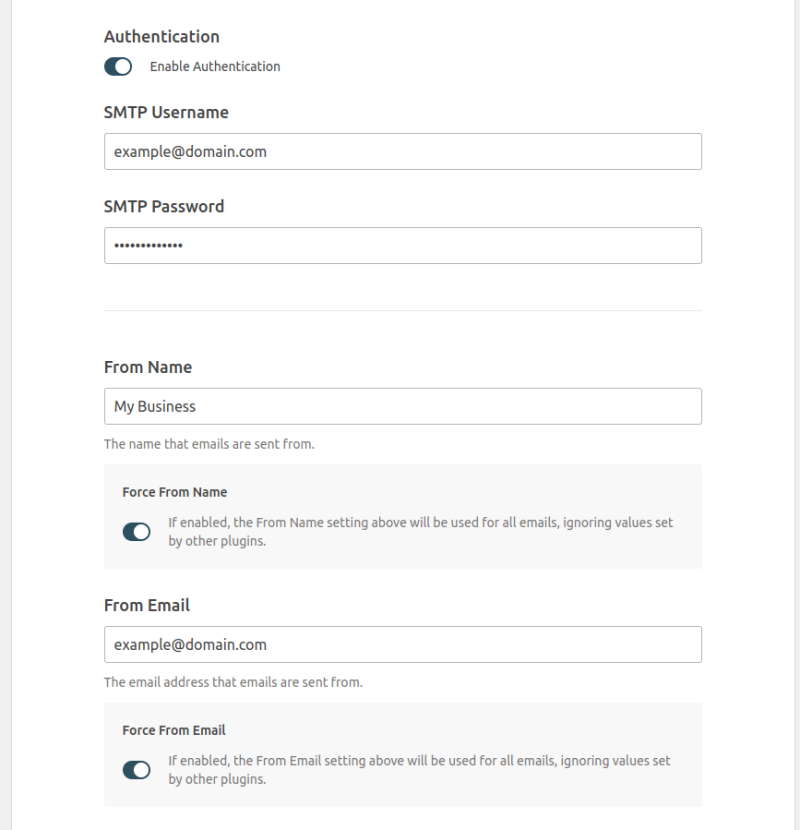
WP Mail SMTP will then prompt you with some additional preferences – you can choose to enable these based on what you’d like of the plugin. If you’re unsure, leave it as default.
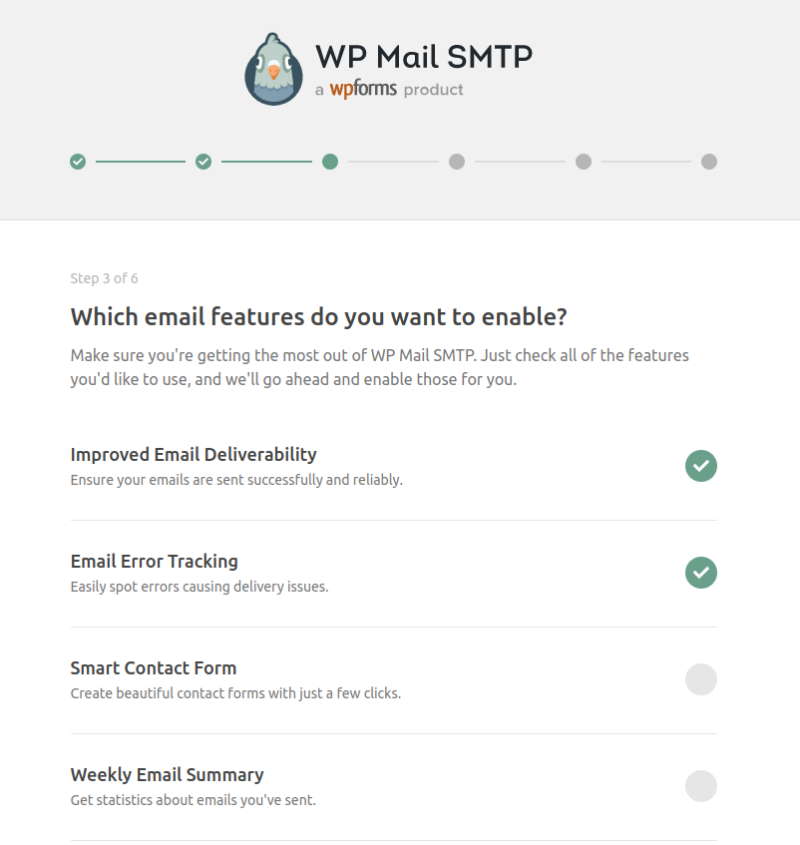
WP Mail SMTP will then run a quick test of the settings you’ve used – if there’s any errors, you’ll then be prompted to recheck your details.
If not, you’ll see the following screen:
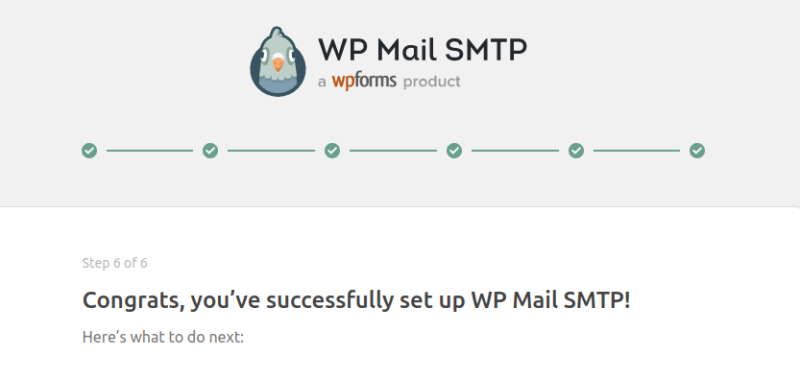
And you’re all set to send your emails using SMTP.
Easy WP SMTP
Easy WP SMTP aims to make setting SMTP up and testing as quick and as simple as possible. Once it’s installed, head to the Settings tab of your WP Admin area, and you should see a new option for Easy WP SMTP.
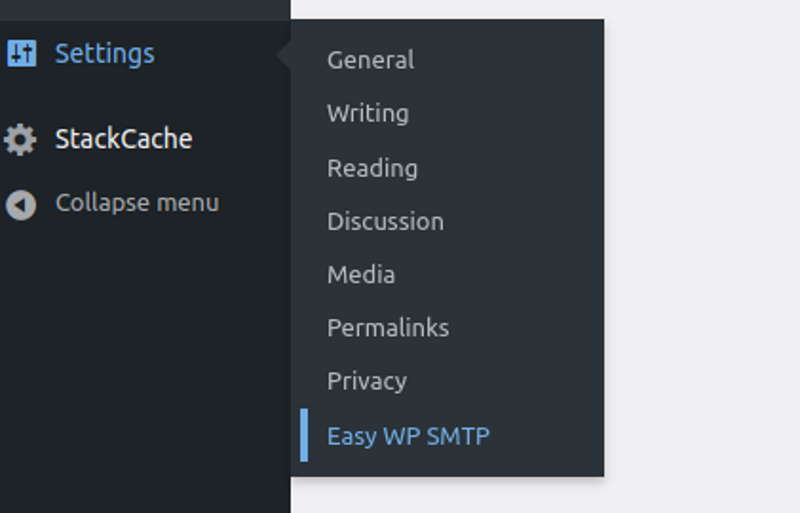
Once selected, you’ll be greeted with a form with all of your needed details. From Email Address is the email address you wish to use for sending, and your From Name is the name you want the email to appear to come from. Reply-To Address is the address used for the Reply-To field, and you can also set a BCC Email Address if you want to have a copy of the email sent to another mailbox.
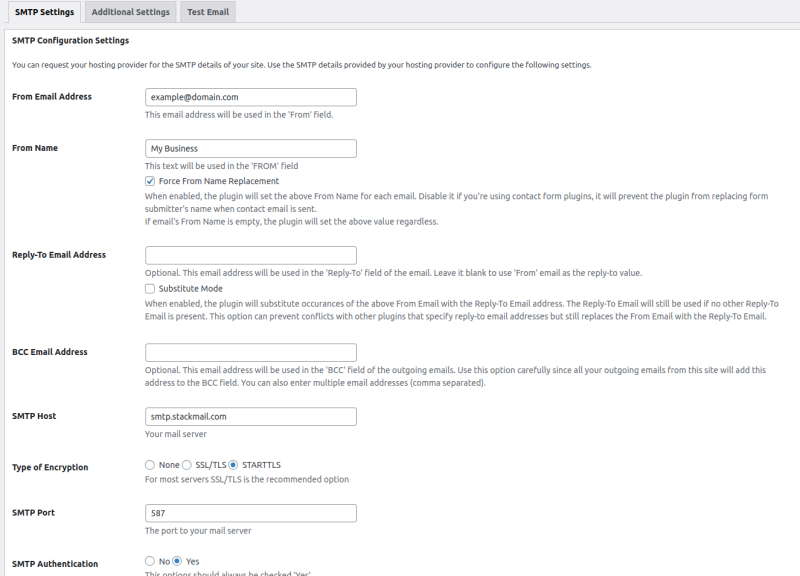
Below that, you have entry fields for your SMTP Host, which is your email provider’s SMTP hostname, the Encryption, which is the security, and your SMTP Port. Set these to your mail provider’s required settings, and select Yes on SMTP Authentication.
Lastly, enter the mailbox you wish to send from into SMTP Username and the mailbox’s password in SMTP Password, and hit Save Changes.

You can then navigate to the Test Email tab at the top of the form, and send a test email to check the SMTP settings are configured correctly.
If everything is configured correctly, you’ll get a popup confirming your email went through, and you’ll be all set to begin sending emails from your WordPress site using SMTP.
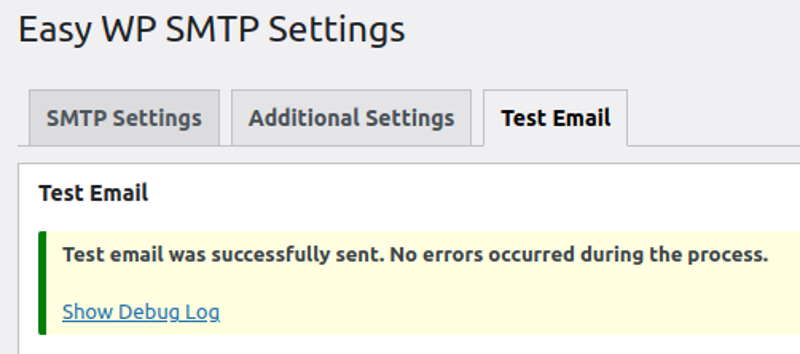
Without Plugins
If you’re more confident with PHP coding and the inner workings of WordPress, you can also set up your SMTP details directly using code. To do this, you’ll need to have set up a WordPress child theme – WordPress themselves provide a guide on how to do so here [ https://developer.wordpress.org/themes/advanced-topics/child-themes/ ]
Note: Before attempting this, make a backup of your site files so that you have a restore point.
In order to do so, first head to your wp-config.php file in the core folder of your WordPress site and add the following code:
// Configure your site to use SMTP
define( 'SMTP_USER', 'email@example.com' ); // Username to use for SMTP authentication
define( 'SMTP_PASS', 'MAIL_PASSWORD' ); // Password to use for SMTP authentication
define( 'SMTP_HOST', 'smtp.stackmail.com' ); // The hostname of the mail server
define( 'SMTP_FROM', 'email@example.com' ); // SMTP From email address
define( 'SMTP_NAME', 'FROM_NAME' ); // SMTP From name
define( 'SMTP_PORT', '587' ); // SMTP port number - likely to be 25, 465 or 587
define( 'SMTP_SECURE', 'tls' ); // Encryption system to use - ssl or tls
define( 'SMTP_AUTH', true ); // Use SMTP authentication (true|false)
define( 'SMTP_DEBUG', 0 ); // for debugging purposes only set to 1 or 2
This sets up the base configurations for your SMTP setup – you’ll want to modify the values above to match the recommended settings provided by your email host, and your own personal preferences.
Then, head to your child theme folder in wp-content > themes and open functions.php. In this file, add the following code:
// Configures SMTP authentication for your site
add_action( 'phpmailer_init', 'send_smtp_email' );
function send_smtp_email( $phpmailer ) {
$phpmailer->isSMTP();
$phpmailer->Host = SMTP_HOST;
$phpmailer->SMTPAuth = SMTP_AUTH;
$phpmailer->Port = SMTP_PORT;
$phpmailer->Username = SMTP_USER;
$phpmailer->Password = SMTP_PASS;
$phpmailer->SMTPSecure = SMTP_SECURE;
$phpmailer->From = SMTP_FROM;
$phpmailer->FromName = SMTP_NAME;
}
And that’s it – your site should now be able to use SMTP for sending your emails directly from your website.
Setting up SMTP with the above steps can ensure that your sent emails are safe, and better improve your chances of having them arrive with your clients without being flagged as spam and potentially missed.
 Austin B.
Austin B.How to configure DNS settings for G Suite and Gmail
Our control panel allows automatic configuration of DNS Records. You can configure your domain name for G Suite (Google Apps) in My20i or StackCP.
- First, select 'Manage hosting', and select Manage on the hosting package you wish to add G Suite DNS records-to.
- Select the Manage DNS icon

- In the dropdown beneath Preconfigured Settings, you'll see two available options: G Suite (E-mail only) and G Suite (All services). The configuration you should use depends on the services you want from Google. If you're using Google just for mail under your own domain name (MX records) use the G Suite (E-mail only) link. For all the other G Suite applications, including records for Docs, Chat, Calendar, and services like Hangouts, use the G Suite (All services) option.
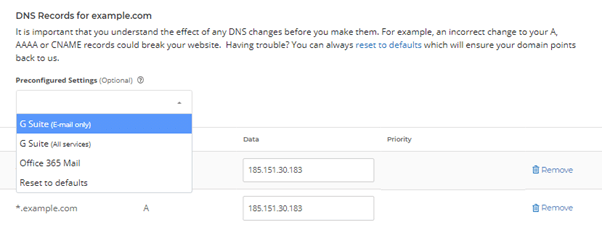
The control panel will show you the records that will be automatically added as a result of this change, allowing you to save them.
Please bear in mind that DNS changes can take up to 24 hours to fully propagate worldwide.
See above for a video demo, using an older UI:
 Lloyd Cobb
Lloyd CobbHow do I set up email on my Android device?
Here's how to set up a 20i email on an Android phone or tablet:
- Open the mail application on your Android device.
- Select Add New Account and enter the mailbox name and it's password.
- Select Manual Setup and select IMAP Account.
- The User name will need to be the same as the mailbox name.
- Enter imap.stackmail.com as the IMAP Server, change the Security Type to SSL, Port 993 should then be used.
- Enter smtp.stackmail.com as the SMTP Server, change the Security Type to SSL, Port 465 should be added.
- The outoing mailserver User name and Password are the username and password for your mailbox.
- Select Sign In and the mailbox will be added to your Android.
How do I enable subaddressing on a mailbox?
Subaddressing can be used to organise your email, so certain messages go to folders automatically. For example, if you have box@yourdomain.com you can now use box+tag@yourdomain.com. When the message is delivered, it will automatically be moved in to the 'tag' folder.
Enabling this feature can be done via My20i or StackCP.
- Head to Manage Hosting or Manage Domains and select Manage for the hosting package/domain
- Select the Email Accounts icon
![]()
- On the email account you wish to add Subaddressing to, select Options > Enable Subaddresses.
After this, you’ll need to allow the platform 30 minutes to set up this feature.
You’ll then be able to have emails auto-filter to folders when following the format in the example above.
 Ruth Turner
Ruth TurnerWhat are my email sending limits?
Email Account Limits
The following limits apply to all messages sent via authenticated SMTP. This will primarily be used for email sent via a mail client, but can also include mail sent via your website if configured to send via SMTP.
We impose a limit of 8,000 messages per e-mail address per 24 hours.
The following limits also apply:
- No more than 10,000 recipients per day.
- No more than 2,000 unique recipients per day.
- A single email may not be sent to more than 100 individual addresses.
As an example, if you were to send 100 emails to 5 different e-mail addresses within a 24 hour period. We would count 100 messages, 500 total recipients and 5 unique recipients.
Web Server Limits
A limit of 500 messages per day is imposed on all e-mail sent by our web servers. E-mails sent by the web servers should be no larger than 5 MB in size. This applies to all messages sent via the PHP mail() function.
Email Size Limits
Our mail system accepts attachments up to 32MB in size, and the maximum message size in our network is 50MB.
Autoresponders
An autoresponder only sends once every 8 hours per sender.
Zero Tolerance Spam Policy
We take a zero tolerance stance against the sending of unsolicited email, bulk emailing and spam. It's to keep our email hosting's excellent reputation. Please refer to our Acceptable Use Policy for more information.
Please note: The distributed nature of our network means email can leave through different servers at different times. As a result, you may see periods when you can send a greater number of messages than the limits mentioned above. However, this behaviour should not be relied upon and is not supported. If you do wish to send a larger number of e-mails than any of the limits mentioned above, we would recommend looking at a specialist marketing email platforms such as SendGrid, Mailgun, or Mailjet.
New Mailbox Limit
When a new mailbox has been set up, the sending is limited to 50 per day for 7 days. This is actually an abuse rule to prevent new mailboxes being set up and used immediately to send out high volumes of spam emails. To preserve the platforms reputation and protect mail being sent from being spoofed as spam by third parties this rule was put in place to protect that status.
 Lloyd Cobb
Lloyd CobbWhat's the difference between using mail.domain.com and imap/smtp.domain.com?
When selecting what credentials to use within your mail client, you have a choice between using either: mail.yourdomain.com or imap/smtp.yourdomain.com
There is no difference between using either of those options.
Primarily, we allow you to use mail.yourdomain.com so that you don’t have to give your customers any instances of ‘stack’, creating a more customised experience.
If you use mail.yourdomain it is likely you'll get a “mail certificate name mismatch” / “cannot verify server identity” error. This is explained in the guide here.
 Austin B.
Austin B.Will installing the Roundcube One-Click affect current emails?
No.
The Roundcube one-click install provides a separate installation of Roundcube for you to manage, send and receive emails. This won't affect the standard stackmail.com webmail application.
As third party software, we can't help with the customisation of this software, but it can be used to create a more bespoke webmail client.
Our one-click install for Roundcube is available with our Web Hosting and VPS.
 Austin B.
Austin B.Why can't I send emails?
There are a few very common reasons why you may not be able to send emails using 20i email hosting.
Are your email settings are correct?
Make sure the email account username and password that you enter in your email client are correct. The details you'll need to be using are found below:
Account type: IMAP- Incoming mail server: imap.stackmail.com.
- Outgoing mail server: smtp.stackmail.com.
- Incoming server port (IMAP): 993
- Use the following type of encrypted connection: SSL
- Outgoing server port (SMTP): 465 (or 587)
- Use the following type of encrypted connection: TLS
For further information, please see: How do I setup my 20i mailbox in Outlook?
Are email sending limits being hit?
Our mail platform has several limits in place in order to protect the reputation of the mail platform and prevent large quantities of spam emails being sent. Currently, our mail limits are as follows:
Web servers: 500 emails a day.
Mailboxes: 8000 emails a day.
Message size/attachments: our webmail system accepts attachments up to 32MB in size, and the maximum message size in our network is 50MB.
If any of these limits are breached, then it won't be possible to send mail from that hosting package or mailbox. In the case of the message size/attachment limit, you'll simply need to look at reducing the size of the email or the attachment being sent.
Where do the MX records point?
You can easily ensure 20i serves the emails by using the tool here: https://mxtoolbox.com
If we host the emails then you'll see mx.stackmail.com returned. If anything else is returned you may wish to contact the provider to determine the cause of the issue.
Is the mailbox disabled for suspicious activity?
If you're receiving the following error when trying to send that the mailbox may have been disabled for sending suspicious emails.
If you've received this error, please get in touch with our Support Team, they'll be able to get this resolved for you.
Reseller Help - How do I support my clients?
These steps should help you provide helpful and effective support to your clients.
1) It's best to determine exactly what the client is seeing, we'd recommend asking for a screenshot of the error they're receiving. From there you may be able to determine from the above guide why they may be having issues. e.g. (Sending mail from this address has been disabled due to suspicious activity)
2) We'd recommend checking the settings within the mail client, it may also be helpful to request a screenshot of these to. We'd then recommend comparing those against the recommended settings above.
3) Specific examples will always help, ask which mailbox they're sending from, when they send an email, did they receive a bounceback email and what did it say?
 Austin B.
Austin B.How do I stop emails going to junk?
Here are the best ways to stop emails from being put in the junk mail folder.
Add an SPF Record
SPF - Sender Policy Framework records help reduce the chance of your domain being spoofed in spam messages. It can also increase the deliverability of e-mail to external providers such as Gmail and Outlook. You can set these to be added automatically to new packages in the Account Preferences of your 20i account or you can add them individually by adding a TXT record to the domain with the data v=spf1 include:spf.stackmail.com a mx -all. This tels other providers that 20i is a confirmed sender of your domain's emails.
Please see here for further information: Can I add SPF records for my domain name?
Add a DKIM Record
DKIM, like SPF, is a standard that enables a specific aspect of the email sending process to be authenticated. The premise of DKIM is to check that an email is really from the domain or sender that it said it was sent from and if it has been altered in any way in transit.
You can add one by going to the hosting package for the domain and to the DomainKeys section. You then need to select the domain you wish to add on to and add a Selector. This can be any value or name you like. It’s simply a field to identify the DKIM record. Then select Add Signature. If your nameservers are with us we'll automatically add this as a TXT record for you. If your name servers are elsewhere you'll need to go to 'Options' for the newly created DKIM and copy the DNS Name and DNS Value to a TXT record with your current DNS provider.
Please see here for further information: How do I add a DKIM record?
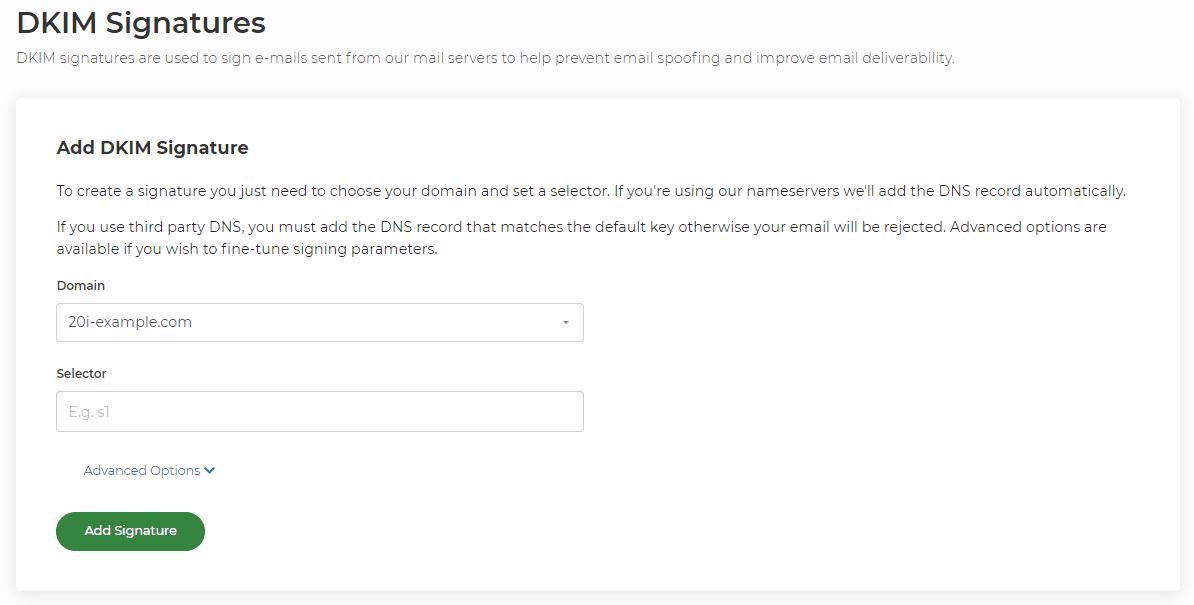
Add a DMARC Record
DMARC - Domain-based message authentication, reporting and conformance records facilitates authentication designed to give email domain owners the ability to protect their domain from unauthorised use, commonly known as email spoofing.
You can generate and add a DMARC record to a hosting package via the DMARC Wizard. You will need to select a domain name to add this record for and the request policy type. The policy type can be quarantine or outright reject. Quarantine will place the email in the recipient's spam/ junk folder, whilst the reject policy will reject the email and it will not arrive within the mailbox.
Generating a DMARC record will automatically add it into your DNS zone.
Please see here for further information: How do I add a DMARC record?
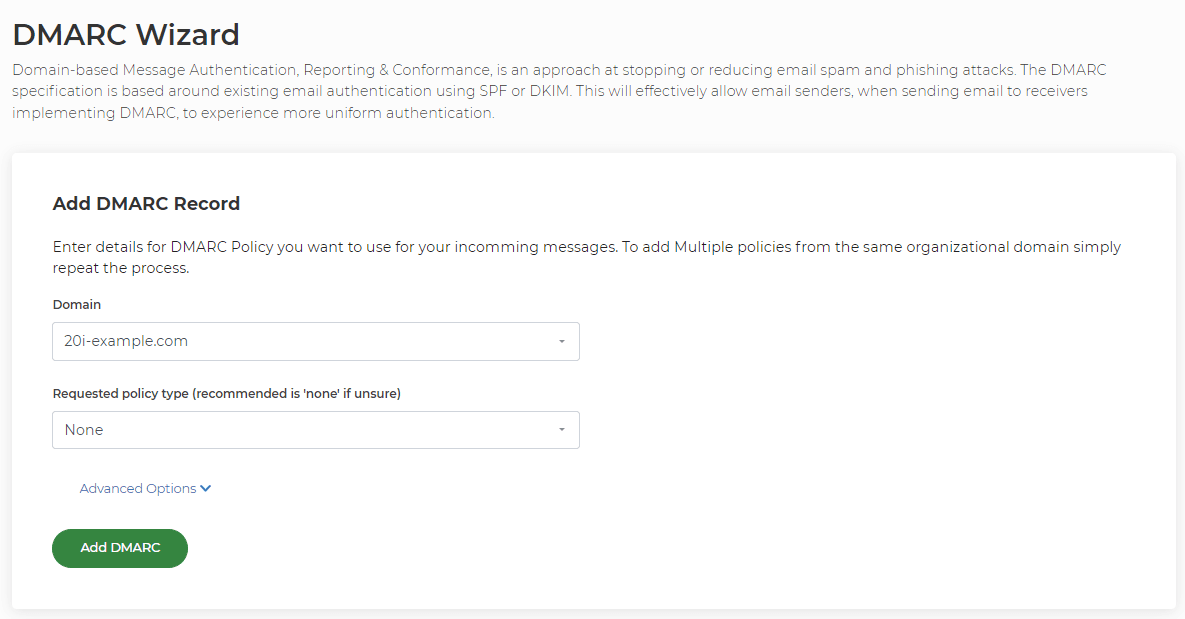
Edit the Junk Mail Filters
If incoming emails are the issue then you can allow-list the mail in the Junk Mail Filters section of any hosting package. In the Junk Mail Filters section, you can set the general filtering level to tell us how strict we should be with incoming spam filtering.
If you just want to allow a particular address this can be done by allow-listing it for a domain or the mailbox on the package. If you want to allow a single mail address then you would need to add 'thataddress@thedomain.com' and if you want to allow a whole domain then you should add '*@thedomain.com'. This will allow mail from the address/domain to bypass our spam filtering.
Please see here for further information: How do I allow-list all email from a specific domain/mailbox?
Reseller Help - How do I support my clients?
These steps should help you provide helpful and effective support to your clients.
1) If your customer is suggesting their sending emails are going to the junk folder, we'd recommend confirming which mailbox they're sending from, and to. Whilst it's difficult to check 'why' an external server may have filtered the email, adding both an SPF and DKIM record should prevent this from happening.
2) If an incoming email has been placed in the junk folder, request the client provides the email headers, this will show a spam score and help determine the root cause for the email to have been filtered.
 Austin B.
Austin B.Getting a "mail certificate name mismatch" / "cannot verify server identity" error?
This error usually occurs when a mail client is using a secure connection to the mail server under a custom hostname that hasn't been covered by our Free SSL.
For example, if imap.yourdomain.com is being used to set up mail in a mail client but an SSL hasn't been applied to the hosting package, then our mail servers default *.stackmail.com SSL won't cover the imap.yourdomain.com hostname. This will result in the "mail certificate name mismatch" / "cannot verify server identity" warning.
To avoid the certificate warning, you can:
- Apply our Free SSL to the hosting package at 20i and wait 30 minutes. Read more about applying the free SSL
- Use imap/smtp.stackmail.com for the mail client setup. Read more about setting up a mail client
 Lloyd Cobb
Lloyd CobbHow do I check mailbox usage across packages in My20i?
20i provides a simple and easy way to monitor mailbox sizes across the packages and sites within your My20i account. This allows you to monitor and manage client’s mailboxes without having to enter individual packages.
To access the Mailbox Usage report:
- Login to My20i.
- Head to the Reporting section on the home page and select Mailbox Usage.

You’ll be shown the total number of mailboxes along with their combined total resource usage.
By default, the list will be ordered according to the highest Percentage Used column. You can also sort the list by selecting the column heading you wish to sort by, i.e. select ‘Mailbox Name’ to sort the domains alphabetically.
 Austin B.
Austin B.How do I add SRV records for Office 365?
SRV records - service records used in Office 365 - can be added via our DNS Management interface inside the control panel.
If the domain is registered with us, you can get to this from the Manage Domains area of the control panel. If the domain is not with us but is assigned to a hosting package, you can reach this interface via the Manage Hosting -> Select Package -> Manage DNS section.
We can automatically add these records for you using the Office 365 DNS record tool, please see the guide about that here: How do I add Office 365 DNS records?
Towards the bottom of the Manage DNS page you will see 3 inputs to allow you to add new records. To add one:
- Select SRV from the Type dropdown.
- In the Name field, type: _sip._tls
- In the Data field, type: sipdir.online.lync.com
- Enter 100 for Priority.
- Enter 1 for Weight.
- Enter 443 as the Port.
For the second record, select Click to add another record. A new row will appear.
- Select SRV from the Type dropdown.
- In the Name field, type: _sipfederationtls._tcp
- In the Data field, type: sipfed.online.lync.com
- Enter 100 for Priority.
- Enter 1 for Weight.
- Enter 5061 as the Port.
Remember to save the records by clicking 'Update DNS'.
That's it!
Your SRV records are now added. Our nameservers will start answering with them almost instantly - but may take up to 2 minutes. If you're running through the Microsoft setup wizard or DNS checker you will be able to continue shortly.
The above SRV records are correct as of 26th Feburary 2017, but we recommend checking your Microsoft account for any changes.
 Austin B.
Austin B.How do I create and send welcome emails?
As a 20i hosting reseller, there are two types of welcome emails that can be sent to your customers:
- Package Welcome Emails - when they are assigned a hosting package
- StackCP User Welcome Emails - when they are given access to StackCP
Firstly, you’ll need to create the templates that will be used. To do this:
- Head to Email Templates from the My20i homepage.
- Select Create New and choose your Template Type. In this example we’ll be setting up a Package Welcome Email.
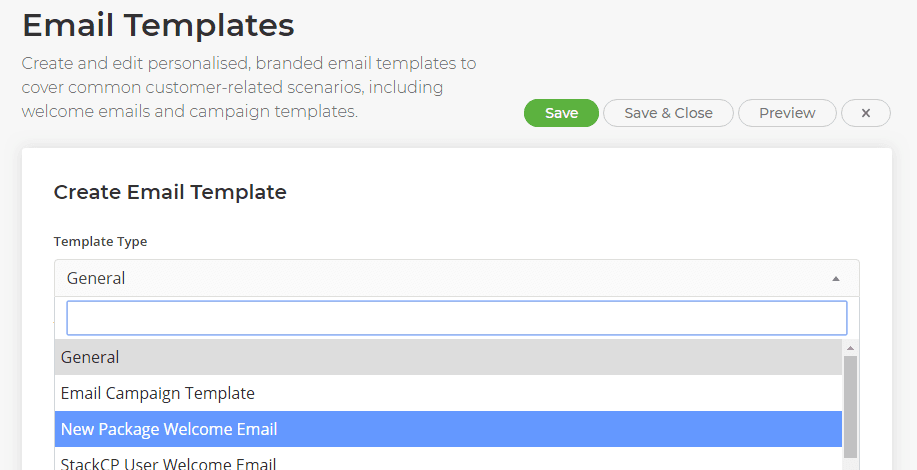
- Give your template a name so you can identify it. For example, ‘WordPress Welcome Email’.
- Enter the email subject that will appear when your customer receives the email, for example ‘Welcome to your new WordPress Hosting account!’
- We’d recommend leaving the email type as HTML, but you can also use plain text if you wish.
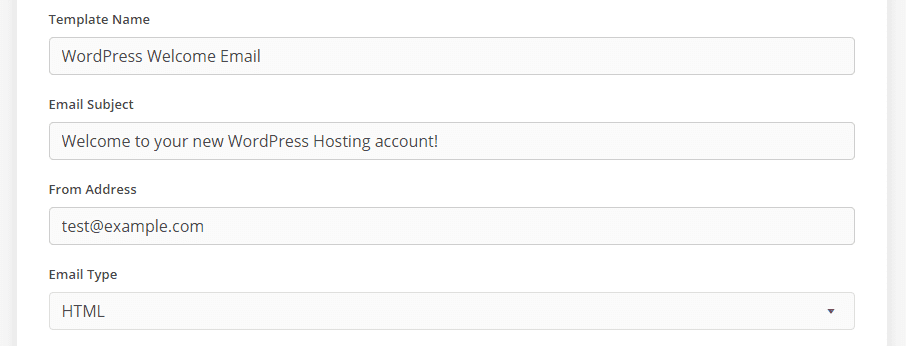
- Select Load Default Template and you’ll be given a full example of a welcome email.
- Should you wish to edit the default template, you can use the email tags to include additional dynamic content to your email.
- You can select Preview to view your email template before saving.
- Select which hosting package types you would like to utilise this template. You can select multiple hosting pack types.
- Finally, select Save & Close.
This process can be used for any kind of email, such as newsletters.
You can send a welcome email when you create a hosting package.
When you select Add Hosting from the Manage Hosting section, you can assign a StackCP user to the hosting package. Doing so will then send the email address associated with that StackCP user the welcome email for the hosting package type that’s been chosen.
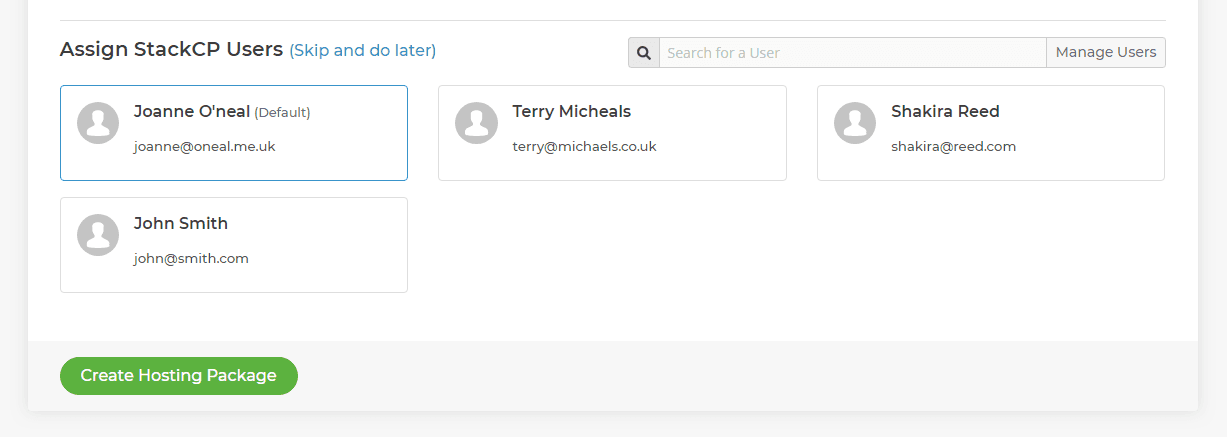
To resend a welcome email, simply locate the hosting package from Manage Hosting, then select Options > Resend Welcome Email. You can then choose the StackCP user to send the welcome email to.
 Austin B.
Austin B.How can I rename a mailbox?
You can easily rename an email mailbox within your 20i account.
- Head to Manage Hosting > Options > Manage.
- Select Email Accounts.
- Select Options > Change Mailbox Name.
- Enter the new name for the mailbox and select Save.
 Austin B.
Austin B.How can I change my mailbox password?
Changing passwords for any mailbox can be done through the My20i control panel.
- Log in to My20i and select Manage Hosting.
- Select Manage on the hosting package that contains the mailbox you wish to change the password on.
- Choose Email Accounts under Email.
- Simply locate your mailbox and enter a new password and click Update. Your new password will have been successfully saved.

Note: You will not be able to recover your old password for the mailbox. We do this to increase your security.
 Austin B.
Austin B.Why are emails not forwarding?
The primary reason for mail not being forwarded is if it is being classed as spam. If an email has been designated as spam, it may be received by one email address but then not forwarded-on to the subsequent email address. This helps the reputation of the server and prevents blacklisting.
To resolve this, you can try lowering the spam filter via Junk Filters within the StackCP web hosting control panel.
To do this:
- Login to My20i
- Locate the package containing the forwarder and select Junk Filters
- You could also try whitelisting the domain/email address the email is coming from.
 Austin B.
Austin B.Do you support email piping?
We do not support email piping - as our email and web server platforms are located in physically different networks to provide higher performance.
Email piping can only work in a 'single-server' type system. There, the server that handles email is the same server that hosts your website, and therefore has access to your website files.
As a result, an alternative means to 'pipe' mail on our platform would be the creation of a script that occasionally connects to a mailbox via POP3/IMAP. This script can then be configured to run via Scheduled Tasks at a desired frequency or time interval.
 Andrew Porter
Andrew PorterHow do I customise the 20i webmail login page?
As part of our White-Label Reseller Hosting you can customise the webmail (Stackmail) login page using HTML and CSS directly via the 20i control panel.
Here are some example CSS below to help you get started!
To add the code:
- Login to My20i.
- Head to Reseller Preferences -> StackCP Theme -> Locate the Webmail Login Page section near the bottom.
- The examples below will need to be entered in to the CSS field.
Note: Ensure you've loaded in the default HTML which is required for the CSS changes to be picked up.
Changing the StackCP Login Logo and Adding Branding
Should you wish to change the branding and logo on your Webmail form, you’ll need to modify the default HTML. On line 58 within the default HTML, you should see the following lines:
<div id="layout-content" class="selected no-navbar" role="main">
<img src="skins/elastic/images/logo.svg?s=1582888499" id="logo" alt="Logo">
<form id="login-form" name="login-form" method="post" class="propform" action="./?_task=login">This is the HTML that adds the logo and form to the page – to alter the logo, simply change the src part of this line:
<img src="skins/elastic/images/logo.svg?s=1582888499" id="logo" alt="Logo">To the URL of the image you wish to use. For example:
<img src="https://mydomain.com/images/my-logo.svg" id="logo" alt="Logo">Note: The default size for the default webmail logo is 150x150.
In our example we've replaced the default webmail image with our business logo.
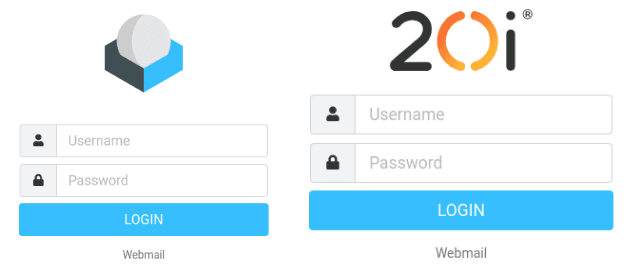
Altering the StackCP Login Form
If we wish to change the look of the form itself, we can use the following CSS:
#login-form {
background-color:#eee;
border-radius:10px;
padding:10px;
max-width: 400px;
}The #login-form section here adds a faint grey background colour to the form, adds some padding to better space the border away from the form entry fields, rounds the corners and increases the size. Modify these values to suit your preferences as needed. As is, this results in the following look:
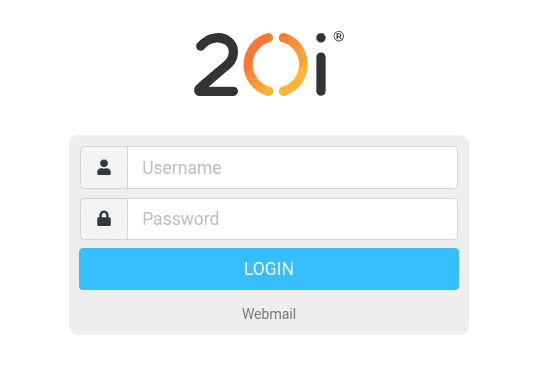
Updating the StackCP Button and Form colours
Next, let’s modify the login button, and make some changes to the input fields to match the rest of the form. We can do this with the following CSS:
#rcmloginsubmit {
width:150px !important;
border-radius:20px;
background-color:#f7921e;
border:0;
}
#rcmloginsubmit:hover {
background-color:#dd7a08;
}
.form-control:focus {
border-color: #f7921e;
box-shadow: 0 0 0 0.2rem rgb(255,118,0,.25);
}The #rcmloginsubmit selector handles the login button here – through this, we modify the size of the button, round the corners and change the colour. Update the hex value for the colour and the size values as per your preferences.
The #rcmloginsubmit:hover section handles the colour of the button when your mouse hovers over it – feel free to change the hex value to whichever colour you prefer.
Lastly, the section .form-control:focus controls the colour of the border around the form entry fields when the user has selected it.
This adds a glow that helps users see what section they’re currently inputting data to. Update the hex value to the colour you want for the border, and fill in the rgb values to match the shades you need for your glow colour.
Tools are available online to covert hex codes to RGB values, if required. The ‘.25’ refers to the level of transparency for the highlight (In a range from 0 to 1, in decimals), so if you wish to make this fainter you may wish to reduce it to ‘.1’.
To follow on from our example above, you can see how the above CSS has updated the colours of the 'Login' fields and 'Login' button.
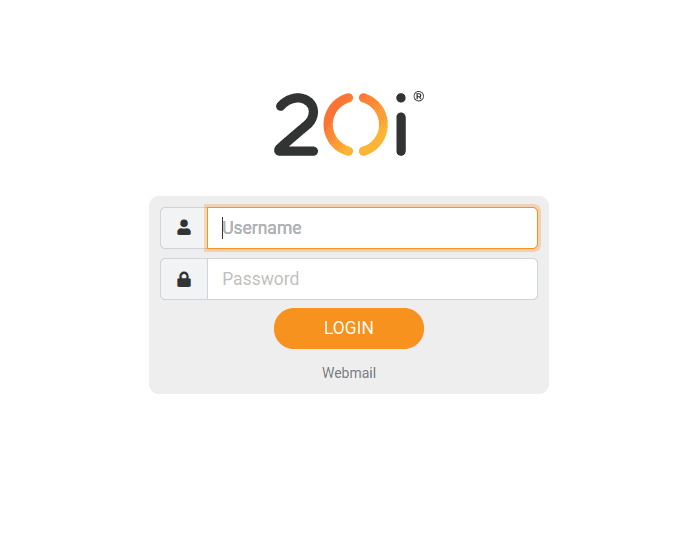
 Ruth Turner
Ruth TurnerHow do I create and send email campaigns?
If you're a 20i Reseller, email campaigns allow you to send targeted, personalised bulk emails to your customers (StackCP Users). These can be used to cover common customer-related scenarios.
To send an email campaign you’ll need to start by creating an email template. To do this:
1. Head to Manage Reseller from the My20i sidebar navigation and then to Email Templates.
2. From the Template Type menu you can select Email Marketing as the template type and Email Campaign Template as the sub-template type.
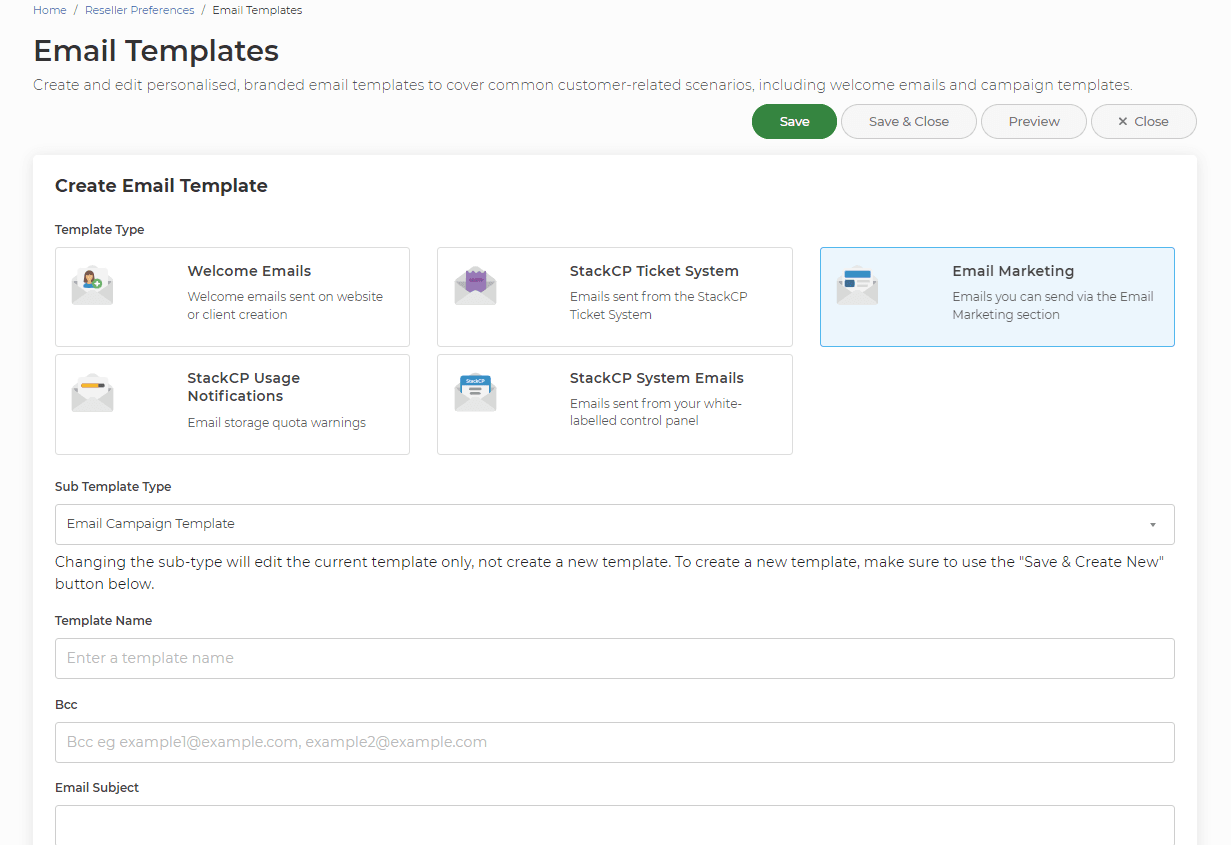
3. Your template may describe a new product you’re launching or an update to an existing one. Other examples include: an add-on product you wish to upsell, news and new features about your company, holiday opening hours etc.
4. Once you’ve completed your email template, head to Manage Reseller from the sidebar navigation >> Email Marketing
5. Select Create Campaign.

6. You can then target your email towards specific users, either by all StackCP Users or by the products that users have access to.
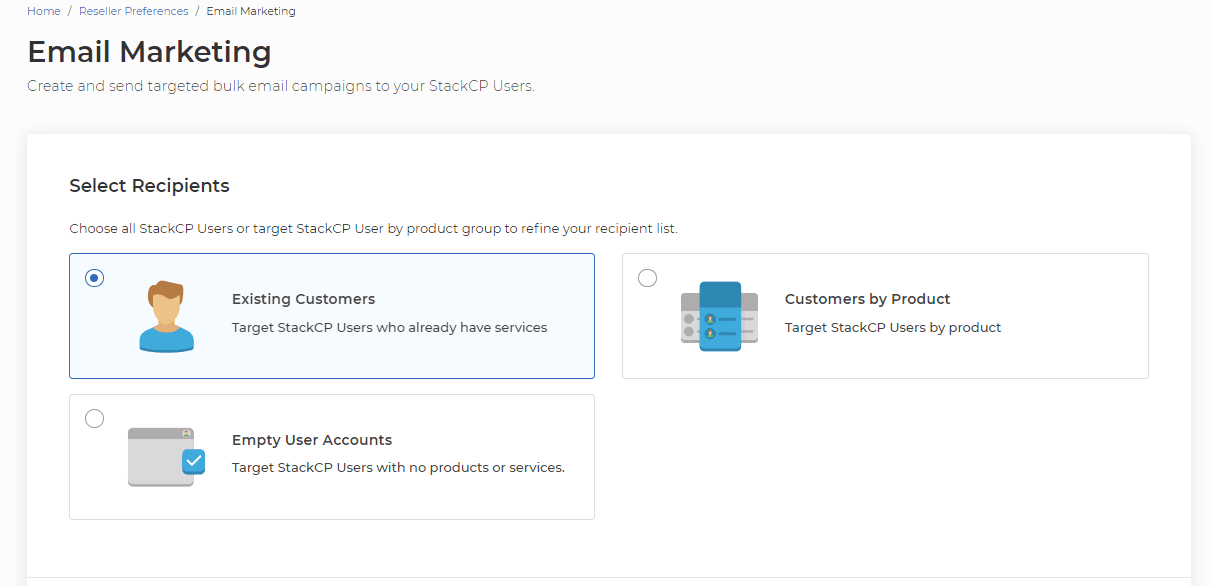
7. Use the existing template you created and select Insert Template.
8. Once you’re done configuring the marketing campaign, select Save.
9. You’ll now see your campaign in a Draft status.
10. To send it, select Options > Send.
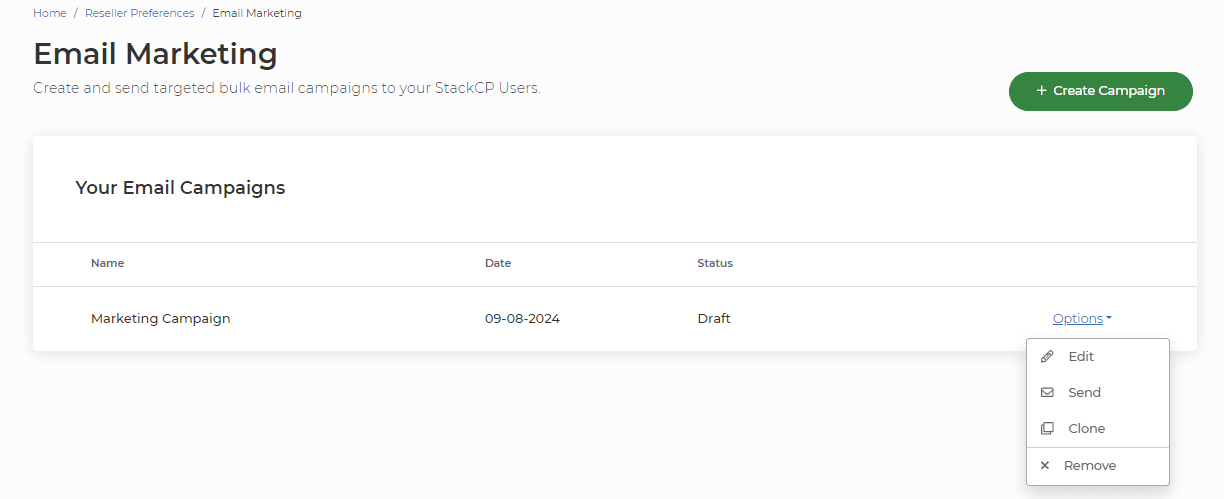
Your email campaign will then be sent to all chosen recipients and the status will show as Finished once all emails have been sent.
 Austin B.
Austin B.How can I use a custom domain with iCloud mail?
With Apple's latest update to iOS and iCloud+ you can use a custom domain with your iCloud Mail accounts. Setting up iCloud Mail with your custom domain name is easy.
Step 1 - Setting up iCloud Mail on your devices
You'll first need to set up the Mail app on your Apple device.
Set up an iOS or iPadOS device
On your iPhone, iPad or iPod touch, go to Settings > [your name] > iCloud, then turn on Mail.
Set up on a Mac
![]()
On your Mac, choose Apple menu > System Preferences, then do one of the following:
- macOS 10.15 or later: click Apple ID, click iCloud, then select Mail
- macOS 10.14 or earlier: click iCloud, then select Mail
Step 2 - Setting up iCloud Mail with your custom domain
To add your custom domain name you'll need to have an iCloud+ account.
- Head to to icloud.com
- Select Account Settings
- Locate the Custom Email Domain and select Manage
You'll be prompted to confirm who'll use the domain and email addresses you'll be adding:
You'll then be asked to enter the domain name you wish to add. Once you've entered your domain name select Continue.
Step 3 - Complete the setup
You'll be then prompted to follow a few more steps shown below. You can add your mailbox now or skip to the next step.
This step requires you to enter the DNS records at your registrar. With 20i that's easy and the steps below will show you how you can do that. Select View and you'll be shown the records you need to add.
Add the iCloud Mail DNS to 20i
- Head to Manage Hosting > Options > Manage (or Manage Domains > Options > Manage DNS).
- Select Manage DNS.
- Add the DNS as follows:
MX:
Name: [example.com]. (Can be left blank)
points to: mx01.mail.icloud.com.
priority: 10
MX:
Name: [example.com]. (Can be left blank)
points to: mx02.mail.icloud.com.
priority: 10
TXT:
Name: [example.com]. (Can be left blank)
points to: [personal TXT record provided during setup]
TTL: 3600
TXT:
Name: [example.com]. (Can be left blank)
points to: " v=spf1 redirect=icloud.com"
CNAME:
Name: sig1._domainkey
points to: sig1.dkim.[example.com].at.icloudmailadmin.com.
Once done, select Update DNS.
Back within iCloud, select Finish set up.
Select Confirm and Apple with verify the DNS records you've just added.
Using the Mail app on your Apple device you should now be able to send and receive emails from your domain name through Apple's email service. If you didn't add an email address in Step 3 you can do so within the iCloud Account Settings > Custom Email Domain > Manage > select your domain and then add an email address.
 Austin B.
Austin B.How do I create an email account for my domain?
Creating a new email account for a domain name is done through My20i.
- Log in to My20i and click Manage Hosting.
- Select Manage on the hosting package you wish to create an email account for.
- Select Email Accounts under Email.
- Enter the name you want your email account to have and select the domain and click Create Email Account.

- Your email account will automatically be assigned a password, but as soon as the account is created you'll be able to change this to anything you wish.
- You will have immediate access to your webmail account.
Email is included as part of 20i hosting packages, including WordPress/Web Hosting and Managed Hosting on a VPS.
 Austin B.
Austin B.How do I allow-list all email from a specific domain / mailbox?
If you want to allow all emails to be received from a specific sending email address - so that even mails classed as 'junk' will arrive - then you can 'allow-list' this address within Junk Mail Filters within the package.
- Log in to My20i
- Select the package where your mailboxes are located
- Locate the Junk Mail Filters icon
- Locate Allow by Sender and add a domain rule or a mailbox rule to allow mail to always be received from a specific address
 Austin B.
Austin B.How do I create a mailbox?
To create a new email mailbox:
- Select Manage Hosting.
- Select Manage for the package you wish to add the mailbox to.
- Select Email Accounts - enter the prefix of the mailbox you wish to create and select Create Email Account.
A password will automatically be generated for you, but you can change this if needed. You will have immediate access to your webmail account by selecting Options -> Webmail.
 Austin B.
Austin B.The Impact of Marking Forwarded Emails as Spam
At 20i, our email hosting offers the ability to forward your emails from one account to another, streamlining communication and ensuring you never miss an important message.
However, marking these forwarded emails as spam in your primary mailbox, especially within services like Hotmail, affects us as your forwarding provider.
Here's why it's essential to understand the repercussions...
Understanding Email Forwarding with 20i
Email forwarding is a service that allows you to automatically redirect incoming emails from one address to another. It's especially useful if you have multiple email addresses and want to manage your emails from one central location.
The Feedback Loop (FBL) and 20i
When you use services like Hotmail and mark an email as spam, they have a system called the Feedback Loop (FBL). This notifies the sender - in this case, 20i - that their sent email has been marked as spam.
How Marking Forwarded Emails as Spam Impacts 20i
- Unjust Penalties for 20i: When you mark a forwarded email as spam, 20i, your forwarding provider, gets penalized even though we merely relayed the email to you. This could lead to our service getting blacklisted or facing delivery issues in the future.
- Potential Service Interruptions: If 20i is wrongly blacklisted due to excessive spam complaints, it may disrupt our ability to forward legitimate emails to you and other users.
- Strain on Our Reputation: Constant spam markings hurt our sending reputation, making it increasingly difficult for genuine emails to reach users' inboxes across various email platforms.
Better Practices to Handle Unwanted Forwarded Emails
- Filter Instead of Marking as Spam: Use filters to organize or move unwanted emails to a separate folder. This avoids the negative consequences of marking an email as spam while keeping your inbox clutter-free.
- Adjust Forwarding Settings: If you consistently find unwanted emails from a particular sender, consider adjusting your forwarding settings on 20i's platform.
- Address Issues at the Source: If certain emails are consistently bothersome, it's better to unsubscribe or block them at the original email address, rather than marking them as spam after they're forwarded.
Conclusion
As your trusted email forwarding provider, 20i aims to provide a seamless service. Marking forwarded emails as spam affects our ability to offer this service optimally. If you have any questions or need help adjusting your settings, our support team is always here to assist.
 Andrew Porter
Andrew PorterHow to configure calendars using CalDav on a Premium Mailbox in iOS
Our Premium Mailbox add-on comes with inbuilt Calendar functionality using CalDAV – you can synchronise these with your iOS devices to have your Calendar functionality with you wherever you go. In order to set this up once you have purchased the add-on:
- Sign into your Premium Mailbox via Premium Webmail.
- You should see a Calendar button on the left panel. Select this to navigate to the Calendars area.
- Next to Calendars at the top there is a button consisting of three dots – select this, and then Show Calendar URL
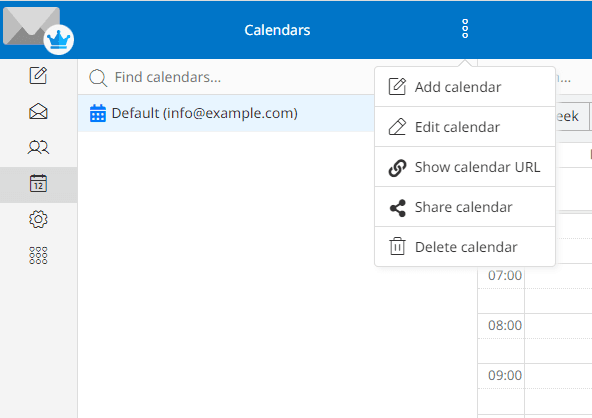
- You’ll see a display with two addresses – the bottom box contains the URL to your calendar – make a note of this.
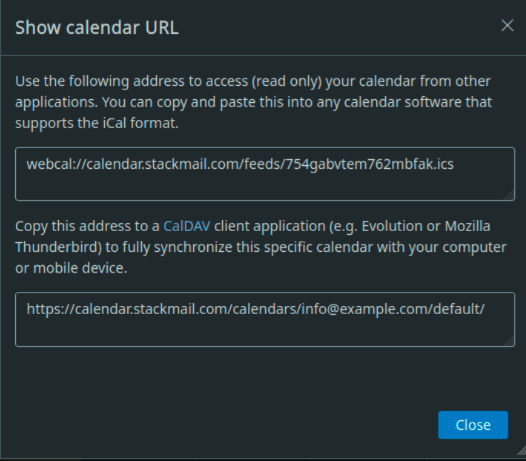
Once you have the details you need, you should then open the Apple Mail client on your iOS device, and do the following:
- Select Settings → Calendar → Accounts.
- Under ACCOUNTS, select Add Account → Other.
- Under CALENDARS, tap Add CalDAV Account to add a calendar account.
- You’ll then be presented with areas to enter your details – these are as follows:
- Server: The URL you noted from your profile.
- Username: Your email account.
- Password: Your mailbox’s password.
- Description: A name for your account ie. My Calendar.
- Select Save at the top. This should set up your calendar on your iOS device.
Please note, when using providers such as Google, Outlook or Yahoo to sync from public iCal links it could take between 12 to 24 hours to sync any new events. We have no control over calendar syncing with outside providers, there could be times where events do not sync correctly. In these cases, there is little we can do as we have no control over how outside providers sync.
 Ruth Turner
Ruth TurnerHow to configure contacts using CardDav on a Premium Mailbox in iOS
Our Premium Mailbox add-on comes with inbuilt Contacts functionality using CardDAV – you can synchronise these with your iOS devices to have your Calendar functionality with you wherever you go. In order to set this up once you have purchased the add-on:
- Sign into your Premium Mailbox via Webmail.
- You should see a Settings button on the left panel (an image of a cog). Select this to navigate to the Settings area.
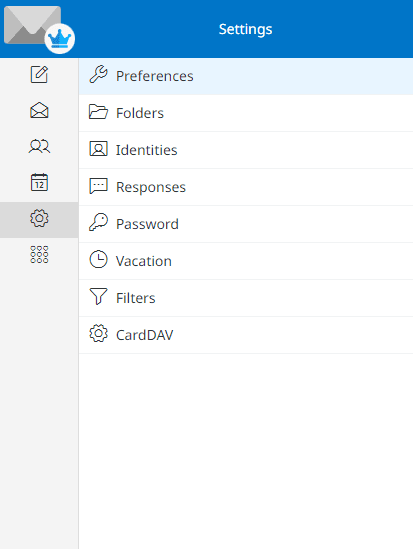
- At the bottom of the list of settings, you should see the option for CardDAV. Select this to access your CardDAV profiles.
- Select the profile you wish to use. Default (email@domain.com) should be an available option if you haven’t set up any others, with your email replacing email@domain.com in the example above.
- This will display to you the details for the Premium Mailbox’s CardDAV profile. Make note of the URL here as it is required for you to connect on your iOS device.
Once you have the details you need, you should then open the Apple Mail client on your iOS device, and do the following:
- Select Settings → Contacts → Accounts.
- Under ACCOUNTS, select Add Account → Other.
- Under CONTACTS, then tap Add CardDAV Account.
- You’ll then be presented with areas to enter your details – these are as follows:
- Server: The URL you noted from your profile.
- Username: Your email account.
- Password: Your mailbox’s password.
- Description: A name for your account ie. Premium Email.
- Select Save at the top. This should set up your calendar on your iOS device.
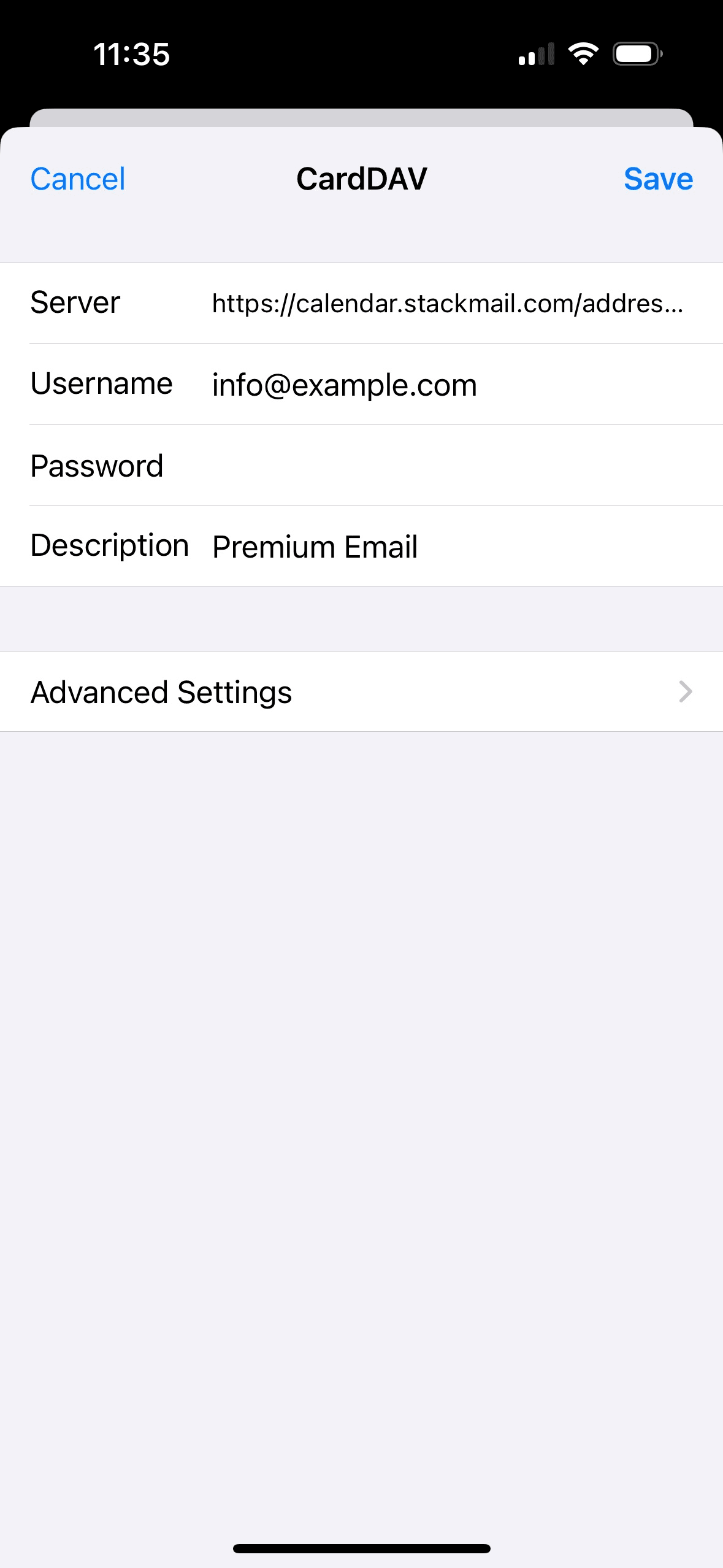
 Ruth Turner
Ruth TurnerHow to send Email from your Stackmail account using Gmail
In this guide, we'll walk you through the process of sending emails from your Stackmail mailbox using Gmail as an SMTP (Simple Mail Transfer Protocol) client.
This enables you to harness the power and convenience of Gmail, while keeping 20i email as your primary platform.
You will need:
- SMTP Hostname – this is smtp.stackmail.com
- Mailbox name – the full email address you wish to send from (i.e. info@example.com)
- Mailbox password – if you do not know this, you can reset your password using these steps.
Log in to your Gmail account
- Open your web browser and go to Gmail (https://mail.google.com/).
- Log in with your Gmail account credentials. If you don't have a Gmail account, you can create one for free.
- Once logged in, click on the gear/cog icon (⚙) in the upper-right corner of the Gmail interface.
- From the drop-down menu, select See all settings.
Configure Gmail as an SMTP client
- In the Gmail settings page, click on the Accounts and Import tab.
- Scroll down to the Send mail as section and click the Add another email address link.
- A popup window will appear. Enter your name and the email address associated with your 20i mailbox.
- Click the Next button.
Configure SMTP settings
- In the next window, you will need to enter smtp.stackmail.com as the SMTP Server.
- Select port 587.
- For the username and password, enter your full 20i email address and the associated password.
- Ensure the Secured connection using SSL option is selected.
- Click the Add Account button.
Verify ownership
- Gmail may send a verification code to your 20i email address. You will need to retrieve this from the Stackmail mailbox, using either webmail or your existing email client setup.
- Enter the code in the verification window to confirm ownership.
Send Emails via Gmail using Stackmail SMTP
You've now successfully configured Gmail to send emails through your 20i SMTP server with the hostname "smtp.stackmail.com."
When composing a new email in Gmail, you can now choose to send it using your 20i email alias by clicking the "From" field and selecting your 20i email address.
By following these steps, you've seamlessly integrated your 20i email services with Gmail as an SMTP client. This enables you to enjoy Gmail's user-friendly interface while using your 20i mailbox as the backend, making email management more efficient and convenient.
If you have any further questions or need assistance, feel free to reach out to our 20i support team.
 Chris Wright
Chris WrightHow to configure a Catch-All forwarder
What is a Catch-All forwarder?
A Catch-All forwarder refers to a configuration where all emails sent to a domain name, that do not match any specific email address, are forwarded to a designated email address.
For example, if you set up a catch-all forwarder for the domain example.com, any email sent to an email address that doesn’t exist on the example.com domain would be forwarded to the designated catch-all email address.
Catch-all forwarders are free with all our Email Hosting.
Why should I use a Catch-All forwarder?
Catch-All forwarders can be useful for ensuring that emails to any potential address on a domain are captured and not lost. For example, if someone were to misspell the first part of the email address (e.g. instead of info@example.com they missed a letter and typed inf@example.com), with a catch-all forwarder set up, that email would still be delivered to the mailbox set on the catch-all forwarder.
Wildcard forwarding
We also support Wildcard Forwarding as well. Wildcard forwarding will automatically forward any e-mail sent to your domain to another domain with the same email address.
For example, if an email was sent to sales@example.com, and this address wasn’t set up, then a wildcard forward could be set up to send this email to sales@forward.com. The same address but a different domain.
How to set up catch-all forwarding
To set up catch-all forwarding, go the 'Manage Hosting page' within my20i and go to the hosting package you want to set this up on. Once you are in the hosting control panel, under the 'Email' section you will see an icon for Catch-all Forwarders.
![]()
Once you have opened the page you will be able to see the catch-all forwarding section, which looks like this:
In the Domain field, select the domain that you want to set this up for. Within the Destination field, enter the email address where you want the emails to be forwarded to.
You can also set up wildcard forwarding on the same page.
This follows the same rules as the catch-all forwarding, except instead of giving an email address you give it a domain to use.
Once you have added either of these, then you will be able to see the results at the bottom of the page like this:
These forwarders can take up to 30 minutes to set up on our platform, so once you have set one up it should begin working after 30 minutes.
 Corey Seymour
Corey SeymourHow to access Stackmail
Webmail is an email service that allows users to access and manage their email accounts through a web browser, rather than using dedicated email client software installed on a computer or mobile device.
Any mailbox you create within 20i can be accessed using webmail which we call Stackmail. Webmail can be accessed in various ways, such as directly logging in or using the options within the hosting control panel to directly log into your webmail.
Using Single Sign On to log into webmail
There are a couple ways to directly log into a mailbox using single sign on. They can both be found on the Manage Hosting page.
Both options will show under the Email section:
![]()
The Email accounts page will show a list of all the created mailboxes for the hosting package you are managing.
When you click Options > Webmail this will automatically log you in to webmail for that mailbox.
There is also a webmail page under the email section. This will show a page with the mailboxes, but just has one link which will log you in to the webmail for the mailbox:
Directly logging into a mailbox
It is also possible to log into webmail directly by going to stackmail.com and using your email address and password to login.
If needed, you can change the mailbox password within the my20i control panel. This can be changed from Email accounts page on the hosting control panel. There is an option next to each mailbox for a new password to be typed and saved. Once saved that password will work immediately.
- The webmail URL can also be customised to fit your own reseller brand which is explained in this article: How do I set my custom webmail URL?
- It is also possible to customise the look of the webmail login page which is explained here: How do I customise the 20i webmail login page?
StackCP users can also use all of the above methods to log into webmail provided the package type for the hosting has the necessary permissions.
Webmail interface
Once you have logged into webmail you will see this page:
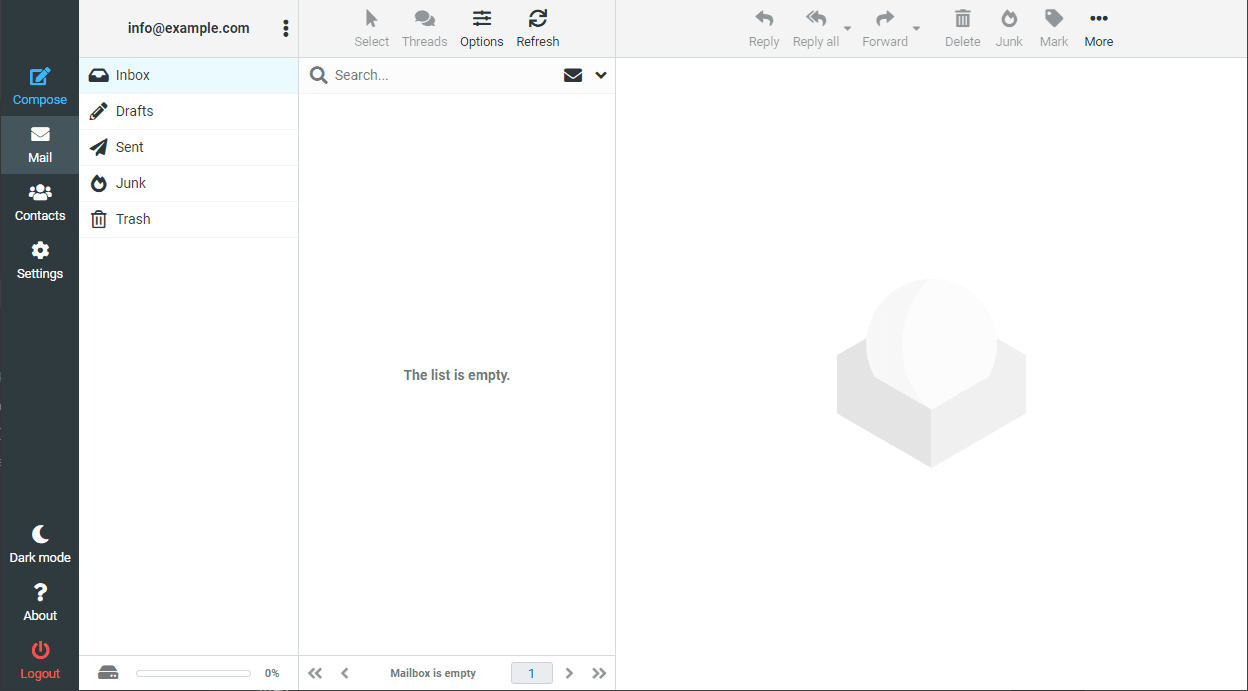
Webmail will always show the mail tab first. This is where you can manage emails.
You can navigate the folders in the list on the left hand side, see the emails in the middle column and once you click on an email it will show the content on the right hand side.
There are other options on the left hand side such as compose which will open a page to compose a new email.
The contacts tab will show a list of the contacts saved for the mailbox.
The settings tab will allow you to change some of the settings for the mailbox as well as adding a signature, adding an autoresponder or changing the mailbox password.
The other options at the bottom will allow you to change between light and dark themes, check information about webmail and logout of webmail.
 Corey Seymour
Corey SeymourHow to setup a 20i mailbox without a hosting package
At 20i, our platform allows domain owners to create a single mailbox without requiring hosting services.
To create a mailbox on a domain name you'll need to go to the Manage Domain Names page within your 20i account.
This will show a list of the domains in your account and if they have hosting attached or not. For a domain without hosting.
Next to the domain you want to add the mailbox to, click the options link and then click Manage.
This will open the Domain management page for the domain and, as long as the domain doesn’t have hosting attached, will show an email management section.
To create and manage a mailbox, click on the Email Accounts icon which is highlighted in the image below:
Once you’re on the Email Accounts page, you'll have the option to create the mailbox you need by entering the first part of the email within the Create Email Account field.
Once you fill in the field you need to click the Create Email Account button. This will reload the page and you will be able to see the mailbox that you created on the same page.
You will have the option to reset the password for the new mailbox as well as some options under the options link like being able to log into webmail, find the settings to use to set the mailbox up in an email client, adjust the junk filter level and increase the size of the mailbox.
Once the mailbox is created, the option to create a mailbox will be greyed out since only one mailbox can be created without hosting. If multiple mailboxes are required, you will need to purchase a hosting package.
 Corey Seymour
Corey SeymourHow to configure calendars and contacts with Premium Mail in Outlook
Outlook does not have built-in support for CalDav or CardDav, the protocols used to sync contacts and calendars with our Premium Mailboxes.
Fortunately, there are add-ons available that can seamlessly integrate this functionality into Outlook.
One such solution is the Outlook CalDav Synchronizer, which you can conveniently download from the following link: https://caldavsynchronizer.org/de/download/
Once you install this add-on it will show in Outlook. When you open Outlook again you should see a new tab show at the top of Outlook with some new options:
You will need to click on the Synchronization Profiles in order to set up a profile for calendar and contact sync. Both will need their own profile so once you click on the Synchronization Profiles button you can click the Green plus icon at the top of the window that opens, select the Generic CalDAV/CardDAV option and click OK to create a profile where you can set up the sync.
The window you should then see is something like this:
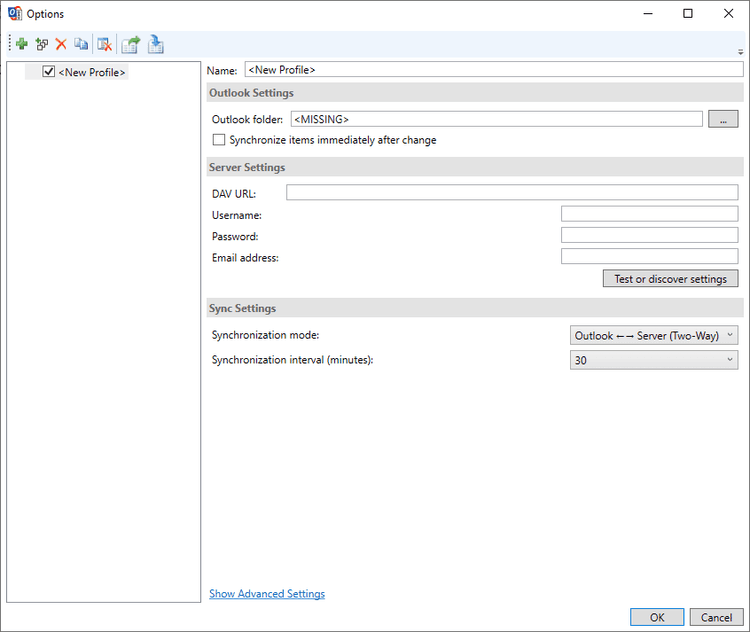
Before you can fill this in completely, you will need to get a URL from the webmail which is used to sync.
To get the URL for calendar sync, you will need to log into the webmail for the premium mailbox, go to the calendar tab on the left hand side, click the three dots at the top of the page where it says Calendars and choose the Show Calendar URL option:

Within the window that opens, you will need to copy the second URL:

To get the URL to sync contacts, you will need to log into the webmail for the premium mailbox, click on the settings tab on the left hand side, Click CardDAV:

This will show the CardDav profiles, and you will need to click Default (info@example.com). This will open more options which will show on the right side of the page and you can find the URL you will need to sync contacts there.
Once you have these, you can fill in all the options needed to set up the sync. Each of the options are explained below:
- Name – The name of the profile, you can name this whatever you like to identify the profile.
- Outlook Folder – This is the folder where you would like to find your synced items. The recommended is Calendar or Contacts based on what will be synced for this profile.
- DAV URL – The URL’s you should have just retrieved using the explaination just above this section.
- Username – The email address for the premium mailbox you are setting this up for.
- Password – The password for the premium mailbox you are setting this up for.
- Email address - The email address for the premium mailbox you are setting this up for.
Once these have been added you can click the Test or discover settings button to ensure the connection is successful and will be able to sync with the calendar or contacts. There are also a couple other options to choose in relation to how the sync should work:
- Synchronization Mode – How this should sync with Outlook. The recommended will be Two Way since this will sync the calendar and contacts between both the server and Outlook. This means that any change made within webmail will also show within Outlook and vice versa.
- Synchronization Interval - How often the add-on will attempt to sync any changes.
Once you have filled all this in, it should look something like this for Calendar sync:
And like this for Contact sync:
Once these are set up, they should sync in the intervals you have set on the settings above. You can also click the synchronize now option under the CalDav Synchronizer tab to sync manually.
Please note, when using providers such as Google, Outlook or Yahoo to sync from public iCal links it could take between 12 to 24 hours to sync any new events. We have no control over calendar syncing with outside providers, there could be times where events do not sync correctly. In these cases, there is little we can do as we have no control over how outside providers sync.
 Corey Seymour
Corey SeymourHow do I use the Email Manager Tool?
We offer an email manager tool to all of our customers. The email manager tool allows you to manage all of the mailboxes in your 20i account in one place, making it much easier and quicker to manage your mailboxes.
To access the Email Manager:
- Go to My20i
- Select Manage Hosting
- Open the Tools drop-down menu at the top of the page
- Select Email Manager

The email manager tool allows you to see how much of the mailbox quota has been used, as well as the percentage used; you can also see the quota limit for the mailbox. You can individually manage the quota sizes and email notifications for the mailbox quota sizes.
The email manager tool also allows you to buy further storage for your mailbox and upgrade mailboxes to premium mailboxes.
How do I buy more storage for my mailboxes?
- Select the mailbox you want to buy more storage for
- Click Buy Storage next to the mailbox
- Select the amount of extra storage you want to purchase
- Click Add to Basket.
How do I change the mailbox quota in bulk?
- Highlight all of the mailboxes you want to update. (If it's all of them, then press the check all button)
- Click Change Quota In Bulk on the top right.
- Select the size of the mailboxes you want them to be.
- Click Save.
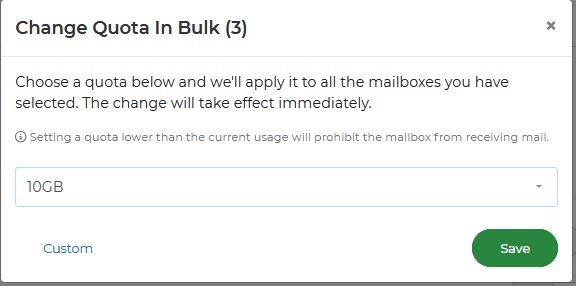
How do I change the Email notification limits in bulk?
- Highlight all of the mailboxes you want to update. (If it's all of them, then press the check all button)
- Click the Change Notifications in Bulk button in the top right.
- Select the first limit email notification percentage you want to use.
- Select the second limit email notification percentage you want to use.
- Then press Save Changes.

If you encounter any issues with the email manager tool, please feel free to reach out to our support team, who will be more than happy to deal with any queries you may have.
 Ben Gayson
Ben Gayson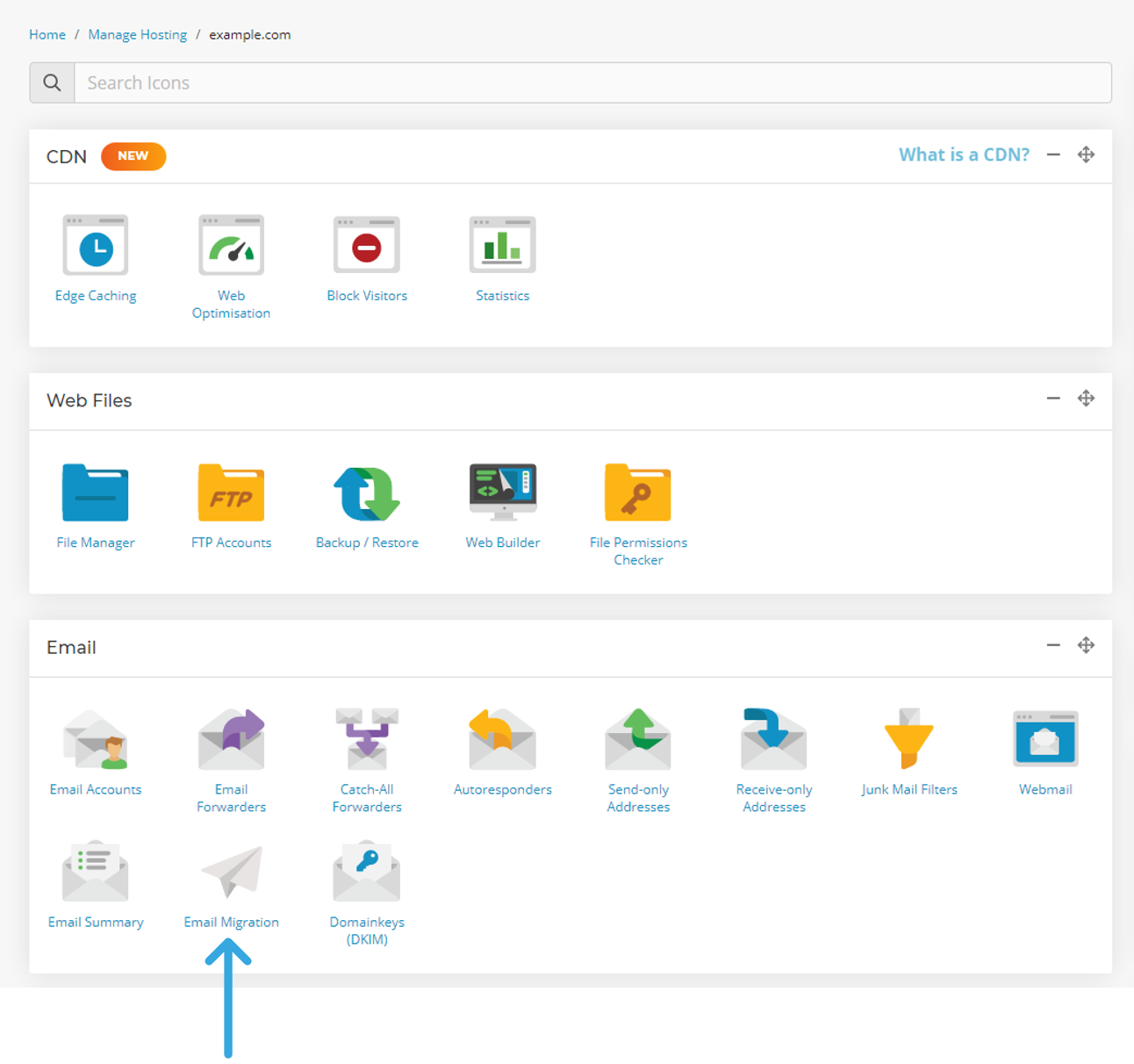

 Harry Leverton
Harry Leverton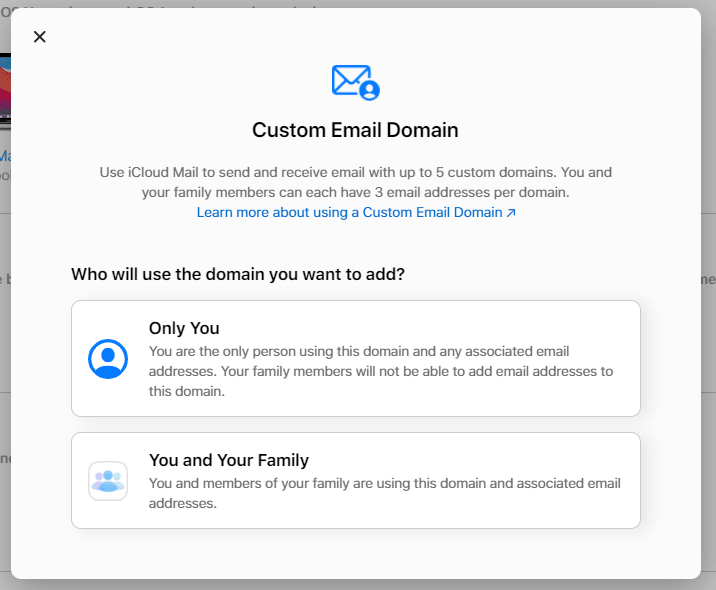
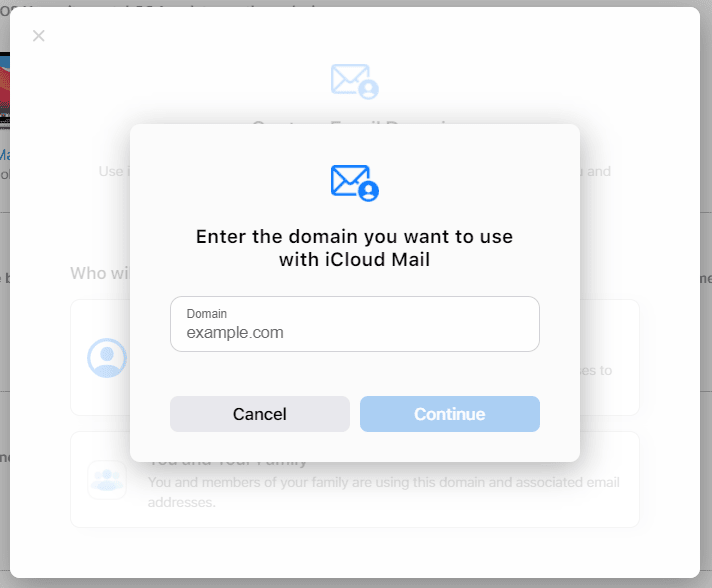
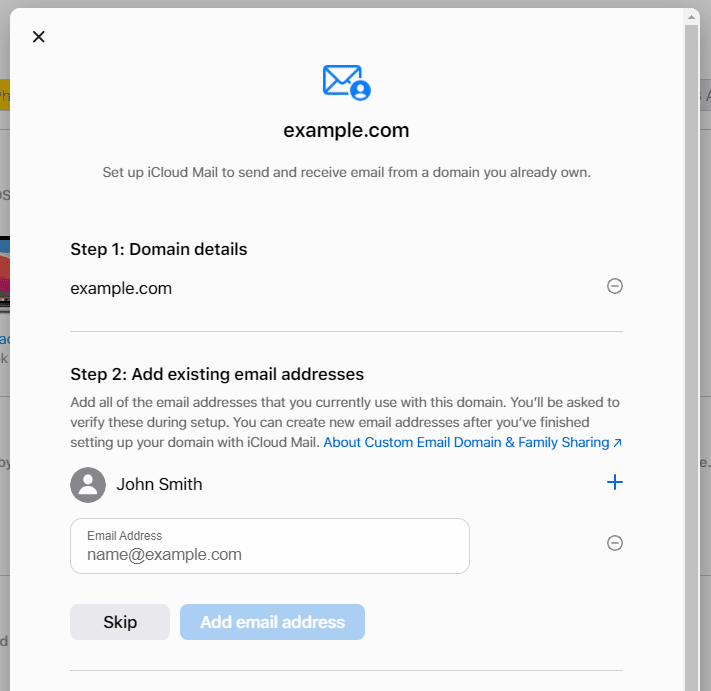
.PNG)

